 |
by Cheyenne MacDonald on (#72H43)
Samsung has upgraded its Freestyle portable projector for 2026. The company announced a new model, the Freestyle+, ahead of CES, touting twice the brightness of its predecessor at 430 ISO lumens, and AI-powered screen optimization features. As with Freestyles past, the Freestyle+ offers 180-degree rotation and 360-degree audio. This one also supports Q-Symphony so it'll work with some Samsung soundbars. Samsung hasn't revealed much else in the way of specs or pricing, but it'll be showing off the Freestyle+ at CES 2026, so we're likely to learn more details soon.While previous iterations of Samsung's compact projector offered automatic screen adjustment features, like auto focus and auto leveling, the Freestyle+ uses AI to take optimization a step further. With AI OptiScreen, as the company is calling it, the projector offers 3D auto keystone to fix distortion on uneven or non-flat surfaces, real-time focus when the projector is moved, automatic screen fit for compatible accessories and wall calibration to reduce visual distractions from the projection surface. It'll also support Samsung's Vision AI Companion.The company hasn't announced a specific release date yet for the new projector, but says it's targeting the first half of the year. It'll be released in phases globally.This article originally appeared on Engadget at https://www.engadget.com/home/home-theater/samsungs-latest-freestyle-portable-projector-is-brighter-and-smarter-014026804.html?src=rss
|
 Engadget is a web magazine with obsessive daily coverage of everything new in gadgets and consumer electronics
Engadget is a web magazine with obsessive daily coverage of everything new in gadgets and consumer electronics
| Link | https://www.engadget.com/ |
| Feed | https://www.engadget.com/rss.xml |
| Copyright | copyright Yahoo 2026 |
| Updated | 2026-01-02 03:01 |
 |
by Katie Teague on (#72GZB)
A look at Hyundai's Holographic Windshield Display. (Hyundai)While it often feels like a full-on auto show, the car vibes feel somewhat lessened at CES 2026. Yes, the Afeela electric vehicle from the Sony-Honda joint venture will be back on the floor, but with the Trump administration yanking most EV incentives from the market, the industry isn't offering a full-court press of new vehicles in Las Vegas this year. That said, there's still plenty of in-cabin car tech on display, including Hyundai's Holographic Windshield Display. Indeed, the company's Mobis subsidiary will present "more than 30 mobility convergence technologies" during CES. And we'll also get to see Hyundai's AI Robotics Strategy, which will showcase its new Atlas robot fresh out of the lab.How to watch Hyundai's presentation at CES 2026Hyundai's presentation takes place on January 5 at 4PM ET, and you can livestream it on either its HyundaiUSA YouTube channel or its global YouTube channel. We'll embed the stream here once it's available.What to expectAs mentioned above, Hyundai will have its Holographic Windshield Display for viewing. It's essentially a next-gen heads-up display that projects key data from the vehicle's dash on the windshield for less distraction, and without obstructing the driver's view. It's a vertically expandable 18.1-inch large display, and passengers can even watch videos without being visible to the driver.Hyundai Mobis collaborated with German optics specialist Zeiss to develop the "world's first system to utilize holographic film to transform the entire front windshield into an ultra-large display surface." It says it will begin mass production in 2029, so don't expect to see this on the market anytime soon.Beyond automotive, though, we'll also get a first-ever look at the company's new Atlas robot. In the teaser image shown in the press release, Atlas looks rather dog-like, which makes sense when you remember that Boston Dynamics was purchased by the Korean multinational back in 2020."This next-generation Atlas represents a tangible step toward the commercialization of AI Robotics, highlighting the Group's commitment to building safe and adaptable robotic co-workers," the company said in the same press release.Hyundai said it will also discuss its other tech areas, including electronics and chassis system safety, as well as an AR head-up display, low-power display solutions and EV drive systems.This article originally appeared on Engadget at https://www.engadget.com/transportation/how-to-watch-hyundais-ces-2026-presentation-live-190051181.html?src=rss
|
 |
by Katie Teague on (#72FTK)
Xinhua News Agency via Getty ImagesHisense is generally best known for its budget-friendly electronics and appliances, like TVs and refrigerators. However, at CES 2025, the China-based company showcased its high-end capabilities with a massive 136-inch micro LED TV, which has recently become available for a staggering $100,000. So what's on deck for this year's show? New leadership, for starters.The company has two new hires, including Chief Marketing Officer Sarah Larsen and Chief Commercial Officer James Fishler. In a press release, Hisense said Fishler's experience in home entertainment, appliances and HVAC is important as the company "builds toward a milestone 2026 and its presence at CES."We'll give you a rundown of what to expect during Hisense's presentation and how you can watch it live.How to watch Hisense's presentationHisense will have a livestream available on Monday, January 5 at 1PM ET on its website. We'll embed the link here once it's available.What to expectWith its new hires in place, Hisense is clearly aiming to further polish its brand. Between Fishler and Larsen, the new front office is bringing to bear their experience from such high-powered competitors as LG, Samsung and Beats. And in a recent interview with Tom's Guide, Larsen emphasized a continued focus on the company's fast turnaround time from concept to market as a key differentiator for Hisense.As for actual announcements, while you can expect Hisense to tout its strength in appliances and HVAC systems (really), Larsen's aforementioned interview specifically calls out the emerging RGB TV space as a focus. We expect this year's show will be all about explaining the shades of difference between mini and micro LED display technologies, as both Samsung and LG have already thrown down pre-announcement gauntlets on the latter. Will any of them cost less than six figures? Let's hope Hisense has some good news to share on that front.This article originally appeared on Engadget at https://www.engadget.com/home/how-to-watch-the-hisense-ces-2026-presentation-live-monday-190040380.html?src=rss
|
 |
by Anna Washenko on (#728W4)
Most Apple products are pretty expensive, but some of the most affordable (and useful) ones are AirTags. The Bluetooth trackers are priced pretty reasonably even when not on sale, but they can be a steal if you can get them on a discount - like right now. A four pack of AirTags is on sale for $65 at Amazon, which is only a few dollars more than the record-low price we saw during Black Friday a couple of months ago. AirTags can be useful for people who travel frequently, helping you to keep track of essentials like your passport as well as a way to keep tabs on luggage while you're on the go. If you do purchase some AirTags, we have some recommendations for useful accessories to go along with them, such as different styles of cases to best attach the trackers to different types of items. These are worth looking over and adding to your shopping cart in order to make the most of the product. AirTags have an IP67 rating for water and dust resistance and their replaceable batteries should last for about a year. They can also support Precision Finding, which gives more exact directions to a lost item, when paired with most models after the iPhone 11. Up to five people can share an AirTag's location, which is helpful for families or large travel groups. If you really only need one AirTag, that configuration is also on sale at Amazon right now - it's 34 percent off and down to just $19 a pop. Follow @EngadgetDeals on X for the latest tech deals and buying advice.This article originally appeared on Engadget at https://www.engadget.com/deals/pick-up-a-four-pack-of-airtags-for-only-65-right-now-202333572.html?src=rss
|
 |
by Anna Washenko on (#72GW5)
One of the many concerns about artificial intelligence these days is how the rush to build data centers is impacting local communities. Data centers can create a drain on resources, and some utility companies have already said customers can expect to see their electricity bills growing as these facilities increase demand. There have been some discussions of what other power sources could support the AI engine, and wind power specialist Airloom is one company that's looking to address the problem. Ahead of the business' upcoming appearance at CES, we've learned a bit about what Airloom has accomplished this year and what it is aiming for next.Rather than the very tall towers typically used for this approach, Airloom's structures are 20 to 30 meters high. They are comprised of a loop of adjustable wings that move along a track, a design that's akin to a roller coaster. As the wings move, they generate power just like the blades on a regular wind turbine do. Airloom claims that its structures require 40 percent less mass than a traditional one while delivering the same output. It also says the Airloom's towers require 42 percent fewer parts and 96 percent fewer unique parts. In combination, the company says its approach is 85 percent faster to deploy and 47 percent less expensive than horizontal axis wind turbines. Airloom broke ground on a pilot site in June for testing out its approach and confirming how those figures work in practice.It's not feasible to bring a wind farm, even a small one, into CES, but Airloom will have a booth at the event with materials about its technology and engineering. While the business isn't in a consumer-facing field, the impact of Airloom's work could have a future positive impact on people if the data center boom continues.This article originally appeared on Engadget at https://www.engadget.com/science/airloom-will-showcase-its-new-approach-to-wind-power-at-ces-160000063.html?src=rss
|
 |
by Katie Teague on (#72FK4)
CFOTO via Getty ImagesDuring CES 2025, we watched NVIDIA tout its leading position in the artificial intelligence arena for the bulk of the presentation. But it did reveal some new hardware, including its RTX 5000-series GPUs and Project Digits desktop supercomputer (later redubbed Spark). This year, the company's website says it's "lighting up CES 2026 with the power of AI." To that end, NVIDIA is pulling out all the stops at its Vegas installation, promising hands-on demos in its booth at the Fontainebleau, replete with the "latest NVIDIA solutions driving innovation and productivity across industries."But don't worry if you're not on the ground in Vegas. Here's how you can watch the livestream of the company's January 5 press conference, and what to expect from NVIDIA at CES this year.How to watch the NVIDIA CES 2026 keynoteNVIDIA CEO Jensen Huang will deliver a 90-minute keynote at CES 2026. The event will be livestreamed on January 5 at 4PM ET via NVIDIA's website (and likely on YouTube as well). We'll embed the link here once it's available.What to expectNVIDIA's game plan for CES is suitably vague so far, including "cutting-edge AI, robotics, simulation, gaming and content creation at the NVIDIA Showcase." It also notes there will be more than 20 demos. Although we're unsure if all of these will be shown during the keynote, we can at least expect to see them throughout the week of CES.Given NVIDIA's sky-high valuation and the fact that the health of the US and global economy seems increasingly linked to infrastructure spending on AI data centers - largely powered by chips from NVIDIA and its competitors - expect Huang's remarks to be as closely followed by Wall Street investors as technology acolytes, if not more so. Will we get any insight on a successor to the company's Blackwell chip? A more detailed look at how NVIDIA's partners are applying AI to real-world robotics? Time will tell, but you might want to keep your stock portfolio in a split screen while taking in Huang's presentation.This article originally appeared on Engadget at https://www.engadget.com/computing/how-to-watch-the-nvidia-ces-2026-press-conference-live-130028668.html?src=rss
|
 |
by Amy Skorheim on (#72GTK)
For a tech writer, being very offline is sort of like being a marathon coach who doesn't run. So in 2025, I tried to reverse years of studied avoidance towards the most ubiquitous technological phenomenon on earth - I got back on social media. The change was short-lived.My first exodus from the feeds took some work - disabling notifications, removing apps from my homescreen and then deleting accounts entirely. This time, the phone put itself down. The whole thing has simply lost its luster.I started with Instagram. Every experience went like this: I'd see a single post from one of the rare family members or IRL friends who are active on the platform. Next, I was fed a sponsored post, followed by suggestions to follow randos. After that, a series of influencer videos that, admittedly, appeal to my taste (funny/absurdist women and dissertations on urban planning). That was followed up with more sponsored posts, mostly from brands I'd looked up for work. Then it'd circle back to the influencers. My eyes glazed over and I tossed the phone aside.Years back, the platform gave off a jolt of quasi-social connection that I'd spend hours sucking up. I fed on pointless thoughts from an ex-coworker, vacation reels from a college roommate, a half-baked loaf of bread that an old friend dropped on the floor but took a picture of anyway. Now it's a bare sliver of that stuff, shoehorned between towers of sponsored content and posts from people who make or promote their living on Instagram. The real people have left. The connection is gone. The FOMO is no more.I experienced some variation of the same disappointment on every platform I rejoined. When I got back on TikTok a few months after the ban, it felt like a frenzied shopping mall. Every video seems to be about four seconds long and most are promotional and/or shoppable. YouTube Shorts is drowning in AI-generated videos, and I don't hit up social media to watch fake footage of desperate wild animal babies clambering onto the boats of helpful humans. My life has no need for simulated toddlers admonishing their pets. Occasionally, I'd hit on something compelling: a clip from late night TV, a stupidly decadent dessert recipe, people from other countries explaining cultural subtleties.But for me, these social media platforms are no longer velcro for the eyes. I remember losing focus, spending long hours on YouTube Shorts and IG. I'd look up bleary-eyed and shame-faced after hours scrolling TikTok's For You Page. Now, after a few minutes, a bored ickiness sets in. I feel like I'm trapped in a carnival of bots hawking shampoo at me and I just want to go home.It's not a mystery how or why things feel different; The answer is always money. These billion- and trillion-dollar companies have shareholders who prize year-over-year performance over anything else. So we get more sponsored posts on Instagram. TikTok purposefully, enthusiastically overloads itself with shoppable content (which isn't going to change no matter who owns it). YouTube is obsessed with engagement so it ends up rewarding people who flood the platform with AI slop. These platforms aren't about human connections and the spread of creativity - the stuff that used to draw me in - they're thinly varnished ecommerce sites sprinkled with brute-forced AI oddities.I'd be sadder about the whole thing if I thought it could be any different. These companies are among the most valuable in the world. The fact that I can't connect with my fellow common people using their services is not surprising. The change isn't even driving everyone away. Instagram reported more users than ever this year, to the tune of 35 percent of the planet. Billions of users still scroll TikTok and watch YouTube Shorts. So maybe it's just a me thing.And I have options. Over-monetization may have made me not want to engage with a few social media behemoths, but things aren't so dire everywhere. Bluesky reminds me of Twitter before X. I take comfort in seeing posts that prove most people are as dismayed as I am over a government and wider economic system that are nakedly uninterested in serving the public. The hot takes aren't quite as funny as they were on Twitter years back - maybe it's just all been said before or perhaps things have gotten too dire for levity. I still don't end up spending a lot of time on the platform, however. It's not as weird as it was before the defection and I get tired of the stream of news headlines contextualized with tut-tutting and handwringing - I'm perfectly capable of doing that myself.It'd be easy to say that social media just isn't my thing, but that's not true because I can't quit Reddit - the shining exception to my social media ennui. It feels filled with actual people. Ads exist, but in a subdued, manageable way. And every contributor, commenter and moderator I've come across on the app is militantly vigilant against the onslaught of artificially generated content. I also like the organizational structure. I know my Home tab will only expose me to my chosen subs and I derive great joy from happy cows, greeble-chasing cats, enigmatic night feelings and freaky abandoned spaces. I use my local subreddit r/Albuquerque daily to answer questions and keep tabs on the world (directly) around me.Sadly, Reddit is an outlier, a misfit exception to the rule, and now that it's gone public, it may follow a similar monetization push. Bluesky is tiny, new and not yet profitable, so who knows where its financial journey will lead it (though the world without Caesars" shirt gives us some hope).There's something lamentable about the loss of the connections we gleaned from platforms that were once compelling, engrossing and rife with the creativity of our fellow humans. Ultimately, any public-facing company that prioritizes profits over everything else has no incentive to look out for its users. So I don't expect any of the larger social platforms to pull back on their monetization marches. For now, I've decided I'm comfortable with my admittedly narrow interaction with the world of social media. As a Gen-Xer, online-first wasn't how my relationship to the world started out. And I'm pretty confident I know enough about other tech-related stuff to be useful to my editors and readers without a black belt in social. (Ed. note: She is.) Besides, Karissa's got us covered.This article originally appeared on Engadget at https://www.engadget.com/social-media/in-2025-quitting-social-media-felt-easier-than-ever-140000374.html?src=rss
|
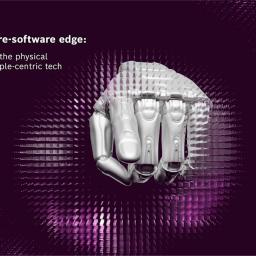 |
by Katie Teague on (#72GTM)
You may know Bosch as a home appliance brand (via its partnership with Siemens), but the German multinational is generally more focused on providing underlying technology and engineering solutions to auto, home and manufacturing partners across the globe. It's fitting, then, that much of what it's showing off at CES 2026 is more intended to be licensed to other companies versus Bosch-branded products you'll be seeing on store shelves.Case in point is Bosch's automotive plans at CES. The company will present "AI in the car," or more specifically, in the cockpit of the car. "Bosch's AI-powered cockpit makes driving more comfortable, intuitive, and safer for all occupants," Bosch board member Markus Heyn said in a press release. We'll get into all the details below, as well as how to tune in to the press conference on Monday.How to watch Bosch's CES 2026 presentationYou can livestream the event on Monday, January 5 at 12PM ET via the Bosch press page. (If the stream is embeddable, we'll also include it here.)What to expectBosch will be setting up shop in the Central Hall of the Las Vegas Convention Center (booth 16203), where the company will be focusing on its three big themes - mobility, smart home integrations and manufacturing - all of which will include hardware, software and AI solutions.Like many other CES 2026 exhibitors, look for Bosch to emphasize its partnerships with the big dogs of the AI space at the show. For instance, that AI-powered car cockpit mentioned above will feature integrations with both Microsoft and NVIDIA. For instance, Bosch is touting the ability to use voice commands to join a Teams call, while the car's system will automatically activate adaptive cruise control. And it's noting that NVIDIA's software suites will help manage "real-time sensor processing and vision-language models."Here's a glimpse of what the booth will look like:This article originally appeared on Engadget at https://www.engadget.com/ai/how-to-watch-the-bosch-ces-2026-press-conference-live-130020898.html?src=rss
|
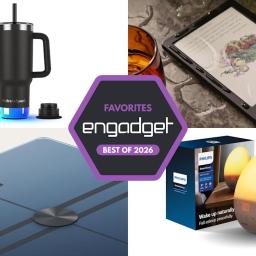 |
by Rob Webb on (#72GTN)
The start of a new year always feels like a reset button. Everyone's talking about moving more, eating better, sleeping longer or finally taming their digital chaos. But resolutions rarely survive on willpower alone. The right tools or piece of tech can make those goals easier to keep by turning motivation into a habit. Whether you're trying to close your rings, track your progress or just build better routines, these smart picks make self-improvement feel a little more achievable, and a lot more enjoyable.Gear that can help you stick to your New Year's resolutionsThis article originally appeared on Engadget at https://www.engadget.com/the-best-gear-to-help-you-stick-to-your-new-years-resolutions-130000389.html?src=rss
|
 |
by Daniel Cooper on (#67D9S)
If you are trying to stay on top of your health this year, a smart scale can make the process feel more manageable. These devices log details like body fat, muscle mass and water levels, then sync everything to your phone so you can see patterns instead of guessing. It is an easy way to track changes and stay motivated between workouts or check-ins with your doctor.
|
 |
by Karissa Bell on (#72GGZ)
It's no secret that AI-generated content took over our social media feeds in 2025. Now, Instagram's top exec Adam Mosseri has made it clear that he expects AI content to overtake non-AI imagery and the significant implications that shift has for its creators and photographers.Mosseri shared the thoughts in a lengthy post about the broader trends he expects to shape Instagram in 2026. And he offered a notably candid assessment on how AI is upending the platform. "Everything that made creators matter-the ability to be real, to connect, to have a voice that couldn't be faked-is now suddenly accessible to anyone with the right tools," he wrote. "The feeds are starting to fill up with synthetic everything."But Mosseri doesn't seem particularly concerned by this shift. He says that there is "a lot of amazing AI content" and that the platform may need to rethink its approach to labeling such imagery by "fingerprinting real media, not just chasing fake."From Mosseri (emphasis his):
|
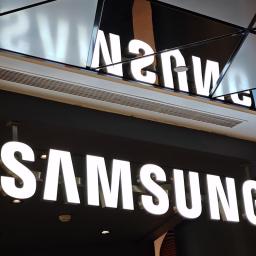 |
by Katie Teague on (#72GFG)
NurPhoto via Getty ImagesSamsung is arguably the 800-pound gorilla of CES, with a full spectrum of products that range from phones and computers to refrigerators to AI assistants and rolling robots. But for CES 2026, the company is shaking up the schedule a bit: Instead of its longtime midday Monday press conference position, the Korean giant will front-run the entire show with a Sunday night presentation.Samsung has already given a few hints as to what's on the agenda, but what we're really hoping to see is an update on the Ballie robot - a star of previous CES presentations that ostensibly missed its previously promised 2025 release date.How to watch Samsung's "The First Look" presentation at CES 2026The event will stream live from the Wynn Hotel in Las Vegas on Sunday, January 4 at 10PM ET. There are several ways to tune in: you can watch via the Samsung Newsroom, Samsung Electronics' official YouTube channel or via Samsung TV Plus. (We'll embed the stream here once it appears on the channel.)What to expect from Samsung at CES 2026Keynote speaker TM Roh, the CEO of Samsung's Device eXperience (DX) Division, will discuss the company's plans for the new year and beyond, which will (of course) include "new AI-driven customer experiences," the company said in a press release. In addition, we'll hear from the President and Head of the Visual Display Business, SW Yong and Executive Vice President and Head of Digital Appliances Business, Cheolgi Kim. Those two will "share their respective business directions for the upcoming year."But if you're looking for more specifics, Samsung is following its "Advent calendar" approach to early CES announcements, with new press releases dropping nearly each day. So far, we know that - like competitors LG and Hisense - the company will be offering details on a line of micro RGB TVs (replete with confirmed screen sizes of 55 to 115 inches). Also confirmed: a full line of appliances infused with what Samsung calls Bespoke AI.It's likely Samsung will map out its CES plans in greater detail as the January 4 event approaches, so we'll update this story accordingly when it does.This article originally appeared on Engadget at https://www.engadget.com/mobile/how-to-watch-samsungs-first-look-ces-2026-presentation-190027604.html?src=rss
|
 |
by Katie Teague on (#72EWE)
Sony's CES 2026 press conference is just days away, but this year has a twist: Instead of an overview of Sony's electronics, video game and Hollywood studio plans for the new year, the presser will apparently have a more narrow focus: electric vehicles. That's because the traditional end-of-press-day slot isn't just Sony, but rather Sony Honda Mobility - the joint venture responsible for the Afeela 1 electric car that has been showcased at CES for the better part of a decade. This year, however, we'll also apparently get to see a an all-new concept model at the event, too.How to watch the Sony Afeela CES 2026 press conferenceThe event will be streamed live from Las Vegas on Monday, January 5 at 8PM ET via the Afeela official YouTube channel. (We'll embed the stream here once it appears on the channel.)What to expect from Sony Afeela at CESWhat's now the Afeela 1 has been shown in various incarnations since CES 2020, where it was originally announced as Vision-S. But so many more important details were confirmed in the past couple of years, including the price, which starts at a staggering $89,900. However, the earlier impressions were less than impressive, and as of CES 2025, that thought remains the same. Engadget's automotive expert Tim Stevens said earlier this year that the EV "feels like a PlayStation 4 in the PS5 era," and that "the car lost what little interesting styling it had while sticking true to some specifications that sounded good five years ago." Ouch.But the Afeela 1 won't be the only vehicle on display. Its CES booth will showcase "several Afeela 1 pre-production vehicles in multiple color variations, alongside a new Afeela concept model," Sony Honda Mobility said in a press release.We're hoping to hear about what's new and improved at CES 2026, and we're also excited to see its newest concept model. And between booth displays and press releases, we're hoping we'll get to see at least a few new Sony Electronics products on the docket for 2026, too.This article originally appeared on Engadget at https://www.engadget.com/transportation/evs/how-to-watch-the-sony-honda-afeela-ces-2026-press-conference-130048622.html?src=rss
|
 |
by Lawrence Bonk on (#72GFH)
Sony has revealed the first batch of PlayStation Plus Monthly Games for 2026. There are three titles to play this month, all of which drop on January 6. As always, you'll retain access to these games as long as your subscription remains active.First up, there's Need For Speed Unbound. This is a racing game that came out at the tail-end of 2022 and was the first entry in the franchise for several years before that. It has a unique visual style, thanks to cel-shaded graphics, with all kinds of vehicles to choose from. There are street racing challenges, weekly qualifiers and a minigame that has you outrunning the cops. The rapper A$AP Rocky also plays a prominent role in the narrative. It'll only available for PS5.Disney Epic Mickey: Rebrushed is a recently-released remake of a 2010 Wii game, but there's no Wiimote waggle here. This is just a great platformer with plenty of fan service for long-time Disney fans. Warren Spector, the lead designer of Deus Ex, was heavily involved in the making of this one. It'll be playable on both PS4 and PS5.Core Keeper is a remarkable indie that has been floating around in early access for several years. The mining sim is now finished and offers an emphasis on crafting, base-building and, of course, exploration. While the game is playable solo, it's primarily intended as a multiplayer experience for up to eight people.As the year ends, so does access to December's PS Plus Monthly titles. Subscribers have until January 5 to download Lego Horizon Adventures, Killing Floor 3, The Outlast Trials, Synduality Echo of Ada and Neon White.This article originally appeared on Engadget at https://www.engadget.com/gaming/playstation/januarys-ps-plus-monthly-games-include-need-for-speed-unbound-and-disney-epic-mickey-rebrushed-182335673.html?src=rss
|
by Katie Teague on (#72F58)
LGFor years, LG has kicked off CES press day with the first event of the morning - and 2026 will be no different. The Korea-based corporation is theming its presentation as "Innovation in Tune with You," and - if it follows the template of past presentations - it will highlight both the consumer electronics and large appliance sides of its mammoth global businesses.Like nearly all tech-centric events these days, expect AI to be the binding theme of the LG presentation at CES 2026. Just be aware that, like Apple, LG has its own customized abbreviation for AI: "Affectionate Intelligence." The company will share "its vision for elevating daily life through Affectionate Intelligence - delivering harmonized and seamlessly connected customer experiences." In other words, the company is aiming for its devices to become more connected and self-automated than ever. Here's how you can stream it and what you can expect.How to watch LG's CES 2026 presentationThe event will stream live from Las Vegas on Monday, January 5 at 11AM ET. You've got a few options for tuning in - watch the livestream on the LG website, the LG Global X channel or the LG Global YouTube channel (embedded below).What to expectHere's what LG has already confirmed it will be showcasing at CES 2026:
 |
by Ian Carlos Campbell,Cherlynn Low on (#71YVH)
The new year is upon us, and that means CES 2026 is imminent. The biggest tech trade show of the calendar comes with a bevy of new and notable announcements that set the tone for trends and expectations for the subsequent 12 months. The CES 2026 show floor is officially open from January 6 through 9, but the fun kicks off with events on Sunday January 4, followed by a host of press conferences on Monday. As always, product demos, announcements and networking will be happening at the Las Vegas Convention Center and other hotels all over the city. As usual, Engadget will be covering the event in-person and remotely, bringing you news and hands-ons straight from the show floor.More specific details and pre-announcements are already trickling out as CES approaches, and thanks to the schedule of the Consumer Technology Association (the trade organization that runs the show) we have a full itinerary of press conferences. We're also using our experience and expertise to predict what tech trends could rear their heads at the show.The CES 2026 schedulePress conferences and show floor booths are the bread and butter of CES. The CTA has already published a searchable directory of who will have an official presence at the show, along with a schedule of every official panel and presentation. However, the press conference schedule gives us a more digestible rundown of the first 48 hours of big events.On Sunday, January 4, Samsung will kick-off CES with "The First Look," a presentation hosted by TM Roh, the CEO of Samsung's DX Division, on the company's "vision for the DX (Device eXperience) Division in 2026, along with new AI-driven customer experiences."Ahead of that, though, Samsung has already outlined a variety of more specifics (scroll down for details). Concurrent with the Samsung presentation will be the official CES Unveiled mini-show, which is generally comprised of smaller and start-up vendors.That'll be followed by multiple press conferences throughout Monday, January 5. The LG CES 2026 press conference, titled "Innovation in Tune with You," is ostensibly to share "its vision for elevating daily life through Affectionate Intelligence." But, like Samsung, this fellow Korean giant has already spent the three weeks leading up to CES pre-announcing many of its new products, so this may be more of a summary than breaking news.Following LG, we'll also see press conferences from Bosch and Hisense, as well as the first-ever CES appearance from Lego. As the Las Vegas afternoon rolls around, we get the first of three chip giants: NVIDIA CEO Jensen Huang takes the stage on January 5 at 1PM PT (4PM ET) and, according to the website, his presentation will last about 90 minutes. Based on the description on the listing, the presentation will showcase the latest NVIDIA solutions driving innovation and productivity across industries." NVIDIA's presser is concurrent with one from Hyundai, where the Korean automotive company will focus on in-cabin car tech and robotics.Later in the day, we get to hear from NVIDIA frenemies Intel and AMD. Intel's 3PM PT (6PM PT) event will ostensibly feature its new Core Ultra Series 3 processors, and AMD CEO Lisa Su will cover AMD's upcoming chip announcements at a keynote address that closes out the day. But expect both of them to be very heavy on AI applications, of course. Sandwiched in between those chip manufacturers will be Sony Honda Mobility. The joint venture will be offering yet more details on its Afeela EV.Finally, on Tuesday, January 6, Lenovo CEO Yuanqing Yang will host Lenovo's Tech World Conference at the Las Vegas Sphere, using the large and decidedly curved screen to share the company's "commitment to delivering smarter AI for all by constantly redefining how technology can engage, inspire, and empower." It's worth noting that Lenovo is the parent company of Motorola, which still makes phones and foldables that feature AI tools, so it's possible those devices feature in the presentation as well.Samsung and LG vie for pre-show publicityAs noted above, both Samsung and LG have continued their recent trend of spoiling nearly all of their respective CES announcements in the days and weeks before the show. LG, for example, has said it will debut its first Micro RGB television at CES. While details are scarce, the company's press release for the LG Micro RGB evo did confirm it has received certifications by Intertek for 100 percent color gamut coverage in DCI-P3 an Adobe RGB, and that it has more than a thousand dimming zones for brightness control.Elsewhere in the TV space, LG is throwing its hat into the art TV" ring that Samsung pioneered with its Frame TVs: The LG Gallery TV will debut in 55- and 65-inch screen sizes, and it will of course show off various artwork when it's not otherwise in use. And if PC gaming displays are more your speed, LG will have that covered, too, with a new line of 5K-capable gaming monitors on deck with built-in AI upscaling.But LG's not just showing off displays. The Korean multinational will also introduce a Dolby-powered modular home audio system, a new line of its xboom speakers (developed with will.i.am) and the company will flex its automation muscles with a humanoid home automation robot named CLOiD.Of course, Samsung refuses to be outdone by its hometown rival, and has also released a pre-CES press release document dump. Samsung will be launching its own lineup of Micro RGB TVs at CES, for starters. The company already introduced its first Micro RGB TV at CES 2025, which was a 115-inch model available for a cool $30,000. Next year, Samsung is expanding the range with 55-, 65-, 75-, 85-, 100- and 115-inch models that use the next evolution of the company's Micro RGB technology.Samsung is also countering LG's 5K monitors with a 6K model that aims to deliver glasses-free 3D (another long-time CES staple). It'll be one of several new displays in the company's Odyssey gaming line.And on the audio front, Samsung has teased several new soundbars and speakers, including Sonos-style Wi-Fi streaming models call the Music Studio 5 and Studio 7.Outside of the formal introduction of new products and initiatives, reading the tea leaves of what was announced last year and what companies are reportedly working on, we can make some educated guesses at what we could see at CES 2026.New chips from AMD, Intel and QualcommCES is frequently the start of a cascade of new chip announcements for a given year, and one of the first places new silicon appears in real consumer products. AMD will likely use its keynote to introduce new versions of its Ryzen chips, including the recently spotted Ryzen 7 9850X3D, which is expected to offer better single-threaded performance, and the Ryzen 9000G series, which could be built with AMD's Zen 5 architecture. The company might also use its CES stage to go over its new FSR Redstone AI upscaling tech.Intel has already publicly announced that it'll launch its Panther Lake chips at CES 2026. The officially titled Intel Core Ultra Series 3 chips fit into Intel's overall "AI PC" push, but are specifically meant for premium laptops. Based on a preview from October 2025, Intel says the first chip made with its 2-nanometer 18A process will offer 50 percent more processing performance than previous generations and for the chip's Arc GPU, a 50 percent performance bump from last generation.Qualcomm is also rumored to be targeting laptops at the show, building on the work it's done moving its Snapdragon chips out of phones and tablets and into other types of computers. The company's Snapdragon X2 Elite and X2 Elite Premium chips should start appearing in laptops at CES 2026, offering a look at the improved speed and AI performance the company promised in 2025.Brighter, "truer" screensAs noted above, Samsung and LG appear to be going all-in on Micro RGB display tech for TVs. Expect that to be a huge buzzword at CES, with Hisense and Sony debuting new models, too.Sony announced a collection of new Bravia TVs in April 2025, replacing the company's flagship, filling in its midrange options and adding a new budget model to the mix. The star of this updated Bravia lineup is the Bravia 9, which features a QD-OLED panel, but Sony appears to be prepping entirely new display tech for 2026. In March 2025, Sony introduced a new RGB LED panel that uses individual Mini LED backlights colored in red, green and blue to produce even brighter, more accurate colors. In contrast to a QD-OLED, which filters a layer of blue organic light emitting diodes through quantum dots that change color, Sony's "General RGB LED Backlight Technology" can get as bright as a Mini LED panel without needing an extra filter layer or worrying about OLED's problems with burn-in.The company has already trademarked the name "True RGB," which could end up being what Sony calls this new flavor of display if it decides to show them off at CES. It seems entirely likely, because CES is nothing if not a TV show - it's a sure bet that we'll see new TVs from the likes of LG and Samsung in addition to Sony. If the company doesn't introduce new display tech for its TVs, it does have a new 240Hz PlayStation monitor coming in 2026 that it could show off at CES instead.Sony isn't the only company hyped on bright screens. Samsung is reportedly pushing an updated version of the HDR10 and HDR10+ standards that could be ready to demo at CES 2026. The new HDR10+ Advanced standard would be Samsung's answer to Dolby Vision 2, which includes support for things bi-directional tone mapping and intelligent features that automatically adapt sports and gaming content. Samsung's take will reportedly offer improved brightness, genre-based tone mapping and intelligent motion smoothing options, among other improvements.And maybe your future TV won't need a power cord, either: Displace will be showing off a mounting option that includes a 15,000mAh battery to juice up whatever giant TV screen you choose to attach.Ballie Watch 2026The ball-shaped yellow robot lovingly known as "Ballie" has been announced twice, first in 2020 and then again in 2024 with a projector in tow. Samsung said Ballie would go on sale in 2025 at CES last year and then shared in April 2025 that Ballie would ship this summer with Google's Gemini onboard. But it's nearly 2026, and Ballie is nowhere to be seen. It's possible Samsung could make a third attempt at announcing its robot at CES 2026, but whether or not it does, robotics will still be a big part of the show.Robot vacuums and mops were a major highlight of CES 2025, and it's safe to expect notable improvements from the new models that are announced at CES 2026. Not every company will adopt the retractable arm of the Roborock Saros Z70, but robot vacuums with legs for rising over small ledges like the Dreame X50 seem like they could become the norm. Roborock could also show off its new Roborock Qrevo Curv 2 Flow, the first of its robot vacuums to feature a retractable roller mop.Beyond just traversing spaces more efficiently, improving robots' navigation could also be a major concern at the show. Prominent members of the AI industry are turning their attention from large language models to world models, which aim to give AI a deep understanding of physical space. Those world models could be the key to making robots - like LG's aforementioned CLOiD - competent at navigating homes and workplaces, and will likely be a significant talking point at CES 2026.We'll be updating this article throughout the month as more rumors surface and new products are confirmed -stay tuned for future updates!Update, December 11 2025, 11:03AM ET: This story has been updated to include detail on Lenovo being Motorola's parent company and how the latter might have a part in the Tuesday presentation.Update, December 16 2025, 1:33PM ET: This story has been updated to include the NVIDIA press conference, which was added to the CTA schedule within the last two days.Update, December 23 2025, 7:28AM ET: This story has been updated to include LG and Samsung's Micro RGB TV announcements, which were made public in the past seven days. The intro was also tweaked to reflect how soon CES is at this point.Update, December 29 2025, 11:03AM ET: This story has been updated to include additional details on pre-announcements from Samsung, LG and Displace.Update, December 31 2025, 12:05PM ET: This story has been updated to include yet more early LG announcements.
|
 |
by Sam Chapman on (#72G98)
Chances are that if a VPN is marketed to everyday users, it more or less runs itself. As long as you go with one of the best VPNs instead of setting up your own manual connection, the interface is likely built so you have to engage with it as little as possible. Generally, if you find yourself constantly thinking about your VPN while using it - as happened to me with Norton VPN - that's a bad thing and you should change providers.That said, it's still useful to get a high-level view of how to use a VPN, especially if you've never used one before. In this article, I'll walk you through how to download, install and configure a VPN on any platform and how to choose servers for specific situations. I'll also discuss specific steps for desktop and laptop computers, phones, tablets, smart TVs, game consoles and routers.How to download and install a VPNThere are over 100 VPNs available on the internet and the two big mobile app stores, but most of them follow a similar approach to download and installation. Except for certain free VPNs, you'll need to create an account on the VPN provider's website, install the VPN client, then use your account to log in. Here are the steps.
|
 |
by Engadget on (#6TAA1)
The festive lights, time off and cute scarfs can only conceal the truth for so long: Winter can be pretty bleak. I don't mean to be a downer, but it's cold all of the time, dark most of the time and this lasts far beyond the most wonderful time of the year. Here at Engadget, we've tried so many tools and products to make winter more bearable from therapy lamps to heaters. We've invested in tea sets, wrapped ourselves in heated blankets and learned to grow herbs indoors - really, anything that will make these three-plus months more bearable, we've tried.
|
 |
by Katie Teague on (#72G99)
picture alliance via Getty ImagesThe Lego Group is hosting its first-ever press conference at CES 2026 - but what the company is going to announce remains a mystery. While the huge toy brick creators haven't given any hints as to what they'll be showcasing, the possibilities run the gamut from new video games to Formula 1 race cars.Here's how you can watch Lego's presentation at CES, and what we might expect to see.How to watch The Lego Group's CES 2026 press conferenceThe Lego CES press conference is scheduled for Monday, January 5 at 1PM ET. While Lego and the Consumer Technology Association haven't yet provided the details, we expect that the press conference will be available as a livestream. Once the details are confirmed, we'll update this post to confirm them. But if a livestream isn't immediately available, the Engadget team will be liveblogging the Lego presser and posting timely details.What to expectThus far, Lego hasn't shared any public info about its CES plans, so we're largely in the dark as to what to expect. At CES 2025, for instance, the toy production giant partnered with Sony to announce the animated Lego Horizon Adventures online game. As such, Lego may spend some time talking up its new 2026 game, Lego Batman: Legacy of the Dark Knight. The company may also give some stage time to its Lego Group F1 Academy racing car, though that too would be more about brand building than consumer products.And given Lego's focus on the environment, the company may discuss its efforts to reach its 2032 ecological goals, including making its Lego bricks more sustainable and reducing carbon emissions by 37%.While there are plenty of new Lego sets for 2026, however, this is CES, not Toy Fair. So we're assuming that the company will be showcasing something that's more tech-centric. Stay tuned.This article originally appeared on Engadget at https://www.engadget.com/gaming/how-to-watch-the-first-ever-lego-ces-2026-press-conference-live-130005307.html?src=rss
|
 |
by Liz Kocan on (#72G7D)
Here are some of this year's biggest, most star-studded TV specials you can watch to help you ring in 2026. (CHARLY TRIBALLEAU / AFP via Getty Images) CHARLY TRIBALLEAU via Getty Images This year, it seems like there are more ways than ever to celebrate New Year's Eve... from the comfort of your couch, that is. Whether you want to catch the enduring Dick Clark's New Year's Rockin' Eve hosted by Ryan Seacrest and filmed live out of Times Square in New York City, or check out of one the many other live specials filled with music performances, comedy and celebrity guests, you've got options. Thursday night's TV schedule also includes New Year's Eve Live: Nashville's Big Bash, a star-studded celebration of country music featuring five hours of performances from some of Nashville's most beloved stars, airing on CBS and Paramount+, plus CNN's New Year's Eve Live with Anderson Cooper and Andy Cohen, and a livestream of the Times Square ball drop, too. Here's everything you need to know about some of this year's biggest New Year's Eve TV specials, including channels, streaming info, and more. How to watch New Year's Eve Live: Nashville's Big Bash Date: Wednesday, Dec. 31, 2025 Time: 8 p.m.-1:30 a.m. ET Channel: CBS Streaming: Paramount+, DirecTV + more What time is New Year's Eve Live: Nashville's Big Bash on? New Year's Eve Live: Nashville's Big Bash starts at 8:00 p.m. ET. The event will be broadcast live in two segments, from 8:00-10:00 p.m. ET/PT and 10:30 p.m.-1:30 a.m. ET/PT on CBS streaming on Paramount+. Who is appearing at New Year's Eve Live: Nashville's Big Bash? Nashville's Big Bash includes performances from, headliners Jason Aldean, Lainey Wilson and Bailey Zimmerman, and special guests CeCe Winans and the Fisk Jubilee Singers who will all perform live from Nashville's Bicentennial Park. Additionally, the five-hour special will feature performances by Dierks Bentley, Brooks & Dunn, Rascal Flatts, Riley Green, Marcus King, Megan Moroney, Zach Top, Keith Urban, Gretchen Wilson and Stephen Wilson Jr. from various venues across the city. The night will be hosted by comedian Bert Kreischer and country star HARDY, who will also perform. You can also expect additional appearances throughout the night by comedian Dusty Slay, TV host Cassie DiLaura, Sirius XM host Buzz Brainard and UFC champion Kayla Harrison. How to watch Dick Clark's New Year's Rockin' Eve Date: Wednesday, Dec. 31, 2025 Time: 8 p.m.- 4 a.m. ET Channel: ABC Streaming: Hulu + Live TV, DirecTV + more What time is Dick Clark's New Year's Rockin' Eve? Dick Clark's New Year's Rockin' Eve hosted by Ryan Seacrest begins at 8 p.m. ET and runs all the way until 4 a.m. ET, marking its longest New Year's Eve broadcast ever. You can tune in live on ABC, or stream it on DirecTV, Hulu + Live TV, Fubo and more. Who is appearing at Dick Clark's New Year's Rockin' Eve? This year's New Year's Eve celebration won't just be taking place in Times Square, the show will span multiple time zones, including hosts and performers stationed in Las Vegas, Chicago, Puerto Rico and beyond. In Chicago, Chance the Rapper is co-hosting the broadcast to help welcome in the new year from the Midwest and lead the live Central Time Zone countdown. Rob Gronkowski and Julianne Hough will be co-hosting the Las Vegas broadcast, and in New York, Ryan Seacrest will be joined by co-host Rita Ora. The 2026 NYRE broadcast will feature 42 superstar performers across New York, Las Vegas, Chicago, Puerto Rico and beyond. Diana Ross will headline the evening with a midnight performance. Ciara, LE SSERAFIM, Little Big Town, and Maren Morris will perform in Times Square. On the West Coast, there will be performances from 4 Non Blondes, 50 Cent, 6lack, AJR, The All-American Rejects, BigXthaPlug, Charlie Puth, Demi Lovato, DJ Cassidy's Pass the Mic Live! featuring Busta Rhymes, T.I., and Wyclef Jean, Goo Goo Dolls, Jess Glynne, Jessie Murph, Jordan Davis, KPop Demon Hunters: The Singing Voices of HUNTR/X (EJAE, Audrey Nuna, and REI AMI), Leon Thomas, Mariah Carey, Madison Beer, New Kids on the Block, OneRepublic, Pitbull joined by Lil Jon and Filmore, Rick Springfield, Russell Dickerson, Tucker Wetmore, and Zara Larsson. Daddy Yankee will perform from Puerto Rico, Chappell Roan will perform from Kansas City and Post Malone will play from Nashville. How to watch CNN's New Year's Eve Live with Anderson Cooper and Andy Cohen Date: Wednesday, Dec. 31, 2025 Time: 8 p.m. ET Channel: ABC Streaming: Hulu + Live TV, DirecTV + more Who is appearing on CNN's New Year's Eve Live with Anderson Cooper and Andy Cohen? CNN's New Year's Eve special will feature performances by Robyn, performing live from Times Square, Shakira performing from Hard Rock Live at Seminole Hard Rock Hotel & Casino in Hollywood, FL, Brandy and Monica from The Boy Is Mine Tour presented by BPC, Bryan Adams from Madison Square Garden, Florence + The Machine, RAYE, mentalist Oz Perlman, plus appearances from Amy Sedaris, Brandi Carlile, Aloe Blacc, Patti LaBelle, singer Michelle Williams, Rebecca Romijn and Jerry O'Connell, comedians B.J. Novak, Leanne Morgan, Sarah Sherman, Stephen Colbert and more. NYC Times Square Ball Drop New Year's Eve free livestream: There will be a free livestream of the Ball Drop on Timessquarenyc.org, offering commercial-free, webcast coverage of the Times Square festivities leading up to the Ball Drop at midnight. There will also be a livestream with open captions and American Sign Language (ASL) interpretation available on YouTube. Both livestreams begin at 6 p.m. ET. Watch free livestream More ways to watch this year's New Year's Eve specials This article originally appeared on Engadget at https://www.engadget.com/entertainment/streaming/from-dick-clarks-new-years-rockin-eve-to-nashvilles-big-bash-heres-how-to-watch-this-years-biggest-new-years-eve-tv-specials-120016871.html?src=rss
|
by Steve Dent on (#6B7AA)
Choosing a camera is not just about resolution or price. It is about finding something that matches how you like to shoot. Some photographers want a compact mirrorless camera that travels easily. Others want an action cam that can handle rough hikes, or a full-frame system that delivers the best possible image quality. With so many options today, there is a camera built for almost every creative style.
 |
by Lawrence Bonk on (#72G0W)
LG just revealed several new speakers in the xboom line ahead of CES 2026. These speakers are part of an ongoing collaboration with will.i.am from Black Eyed Peas, who is on board as the "experimental architect" involved with "development, design and brand marketing."These speakers are fairly different from one another, but they all have AI in common. Each speaker includes an algorithm that automatically adjusts the EQ after analyzing the audio content and the listening space. Many also feature an AI algorithm for ambient lighting, which will adjust the lights to match the song being played.The xboom Stage 501 is intended for parties and karaoke sessions. It features additional AI that can remove vocals from "virtually any song" and even adjust the pitch. The battery lasts for around 25 hours and can operate while plugged in. The speaker delivers up to 220W of power, with dual woofers and full-range drivers. It boasts a five-sided cabinet design that allows for vertical and horizontal placement.LGThe xboom Blast is a boombox with a 99Wh battery that allows for up to 35 hours of continuous playback. That's a mighty fine metric. This is a modern boombox, so it's designed for durability. There are edge bumpers and a side rope handle for carrying.LGThe Mini is a tiny doodad that can be placed just about anywhere. It offers ten hours of battery life per charge and a strap for easy placement. The speaker also includes a built-in tripod mount.LGThe Rock is a, well, rock-shaped speaker that's larger than the Mini but can still be held in the palm of the hand. The battery lasts for ten hours and the design is focused on durability. It has been tested to "seven military standards" to ensure reliability in "challenging outdoor environments." This is an upgrade of the pre-existing XG2 model.We don't have pricing or exact availability on this stuff yet, though the speakers will be on display at LG's booth at CES. The company has said that all four of these gadgets will come out in 2026.This article originally appeared on Engadget at https://www.engadget.com/audio/speakers/lg-announces-new-line-of-xboom-speakers-ahead-of-ces-010052598.html?src=rss
|
 |
by Will Shanklin on (#72FYD)
OneXPlayer is quickly establishing itself as a company that isn't afraid to get weird as hell. (Take, for example, its transforming dual-screen gaming portable.) Its latest venture is another retro gaming handheld that, at first glance, looks like a standard dual-screen model. But the Android-powered OneXSugar Wallet uses a single foldable screen instead.The device was teased via a 54-second video on the Chinese video-sharing platform Bilibili. Retro Handhelds reports that the Wallet uses an 8.01-inch OLED with a 2,480 x 1,860 resolution. (That's a 4:3 aspect ratio when unfolded.) The video also shows an asymmetrical analog stick layout with a D-pad and four action buttons.OneXSugar FoldOneXPlayer / BilibiGiven foldable phones' long-term durability concerns, we aren't necessarily betting on the OneXSugar Wallet being a wise purchase. We also don't know how much it will cost. (The aforementioned weird dual-screen device retails for a whopping $799.) But at the very least, don't be shocked if the novel form factor ends up sparking a few copycats in the competitive retro gaming industry.This article originally appeared on Engadget at https://www.engadget.com/gaming/the-onexsugar-wallet-is-an-upcoming-retro-handheld-with-a-43-foldable-screen-215528433.html?src=rss
|
 |
by Ian Carlos Campbell on (#72FYE)
The demand building out AI infrastructure has placed on PC component makers has already led to the death of one consumer-facing RAM brand, but a new report from the International Data Corporation (IDC) suggests it could have an even worse impact on the PC industry at large. In its worst-case-scenario model, the IDC predicts PC shipments could shrink by up to 8.9 percent in 2026 because of the high cost of memory."Instead of expanding conventional DRAM and NAND used in smartphones, PCs and other consumer electronics, major memory makers have shifted production toward memory used in AI data centers, such as high-bandwidth (HBM) and high-capacity DDR5," IDC writes. That's continued to drive up the price of the RAM that is available for PC makers, which has naturally led to them to raise the price of their own products to stay above water. For example, modular PC maker Framework has already had to raise prices on some of its laptops and parts, and says "further cost and price increases are highly likely over the next months." The IDC says prices could rise by 6 to 8 percent in 2026 if its most pessimistic scenario comes true.The timing of this RAM crunch is particularly ironic because selling "AI PCs" - computers with neural processing units that can run AI models locally - were supposed to be one of the things pulling the PC industry out of its post-pandemic slump. Instead, those computers' larger RAM needs leave them more vulnerable to the effects of the AI industry itself. Computers aren't the only electronics impacted, either. The IDC says the average selling price of a smartphone could grow by 6 to 8 percent in its most pessimistic scenario, and smartphone shipments could shrink by as much as 5.2 percent.Companies like Apple and Samsung, with cash to spare and long-term supply agreements, could weather these higher RAM prices and keep things consistent for a year or two, according to the IDC. For everyone else, though, the near-term is looking much more expensive, and by necessity, much less adventurous.This article originally appeared on Engadget at https://www.engadget.com/computing/idc-warns-of-major-pc-market-downturn-due-to-memory-crunch-214510197.html?src=rss
|
by Anna Washenko on (#72FTM)
Samsung will have two new inexpensive mobile devices arriving on the US market next month. The Galaxy A17 5G starts at $199 and will be available on January 7. Arriving on January 8, the Galaxy Tab A11+ will retail for $250.The Galaxy A17 5G has a 6.7" FHD+ Super AMOLED display and is powered by the same Exynos 1330 chip found in the Galaxy A16 5G. The photography setup is also unchanged from last year's model, with a 50MP main camera, 5MP ultrawide, 2MP macro and 13MP selfie lenses. The base model has 4GB of RAM and 128GB of storage, but can be upgraded with up to 2TB of additional storage via microSD. Its 5,000mAh battery also supports fast-charging, a feature we're happy to see becoming more of an industry standard this year. Essentially, this is more of the same from Samsung, but this product line has a solid legacy of decent smartphones that don't break the bank. Don't be surprised if this joins our lineup of best budget Android phones come 2026.The other new entry-level device is the Galaxy Tab A11+, which boasts an 11-inch LCD display. The rear camera is 8MP and the front one is 5MP. It has an option for 6GB of RAM with 128GB in storage, or for 8GB of RAM and 256GB of storage. Like with the Galaxy A17 5G, the tablet can also be juiced up with additional microSD storage. Performance-wise, you'll top out at 15 hours of video playback on the battery, but fast-charging is also supported here. There are many swankier tablets on the market these days, but if you're looking for a bare-bones option, this Samsung offering is a solid consideration.This article originally appeared on Engadget at https://www.engadget.com/mobile/smartphones/samsung-unveils-its-new-200-galaxy-a17-5g-smartphone-arriving-in-january-184846560.html?src=rss
 |
by Andre Revilla on (#72FQT)
Tomorrow's the big day, and I don't just mean New Year's Eve. The series finale of Stranger Things airs tomorrow, and Netflix has released a trailer for the last episode. We're given only flashes of the final episode, along with a voiceover of an emotional Jim Hopper telling Eleven he needs her to fight one last time.It's just over 1 minute and 30 seconds long, with what appears to be only about 30 seconds of new footage. There isn't much to go on here, as most of the footage features emotional moments from seasons past. Netflix no doubt is hoping to keep much of the excitement under wraps until tomorrow's premiere.Warning: Some spoilers ahead for Stranger Things season 5.Among the new images we briefly see Vecna, hooked up to the ceiling in his gross cave of power on his other world. There's also an explosion at what looks like a military site, plus a few more out-of-context flashes of our heroes.One particularly ominous moment shows Hopper walking around a smoke-filled room with almost zero visibility, gun drawn, when we see what looks to be Vecna appear behind him. We also see Eleven climb back into the sensory-deprivation tank in the Upside Down, presumably to take the fight to the show's big bad.The only continuous scene in the trailer shows most of the gang standing atop a radio tower as Vecna's world moves close enough to collide with the tower's tip. Dustin lets out a "mother of God" as the so-crazy-it-just-might-work scheme the group cooked up in Chapter Seven appears to be well underway.After nine years and five seasons, we will finally reach a conclusion for the heroes of Hawkins. The episode premieres at 8PM ET (5PM PT). For those still craving more from the world of Hawkins after the finale, Netflix is releasing a Stranger Things animated series in 2026.This article originally appeared on Engadget at https://www.engadget.com/entertainment/streaming/netflix-has-released-a-trailer-for-the-stranger-things-finale-171204480.html?src=rss
|
 |
by Lawrence Bonk on (#72F0R)
If cleaning up your digital life is on your New Year's resolution list, we've got good news: 1Password is offering half off its subscription plans (both the Individual and Families plans). That brings the price of the Individual plan down to $24 for a year and the Families plan down to $36 for a year.The plans are nearly identical, but the Families plan accommodates five additional people. These discounts are only available to new customers and the prices expire after the year, so set a reminder to cancel or reassess. And you'll need to act fast, because the offer expires today - Tuesday, December 30.This provider topped our list of the best password managers, and for good reason. We appreciated the intuitive interface and the fact that it's available on most platforms, so you'll never be left out in the cold. These include Chrome, Firefox, Safari, Edge, macOS, iOS, Windows, Android and more.Subscriptions include industry standard encryption and a "secret key" that only you know on top of a master password. There's also two-factor authentication and the platform issues alerts when credentials have potentially been compromised.1Password recently raised prices across the board, but this is still looking to be the best deal for our favorite password manager going into the new year. The only downside here is the one that accompanies many password managers: There is no free version.Follow @EngadgetDeals on X for the latest tech deals and buying advice.Update, December 30 2025, 11:43AM ET: This story has been updated to fix broken links, and to note that this is the final day of the sale.This article originally appeared on Engadget at https://www.engadget.com/deals/1password-deal-last-chance-to-save-50-percent-on-our-favorite-password-manager-162844256.html?src=rss
|
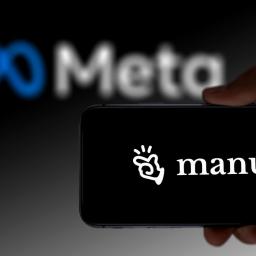 |
by Steve Dent on (#72FN8)
Meta has acquired an AI startup called Manus - known for its custom research and website-building agents - in a deal valued at more than $2 billion, according toThe Wall Street Journal. It's reportedly one of the largest acquisitions yet involving a startup nurtured in China's AI ecosystem.Manus arrived in March 2025, shortly after another Chinese AI startup, DeepSeek appeared on the scene. The company (called Butterfly Effect at the time) originally described it as "the first general AI agent" to perform complex tasks autonomously, rather than just generating ideas. It draws from several third-party models, particularly Anthropic's Claude 3.5 Sonnet and versions of Alibaba's Qwen.Manus is designed to automate certain tasks, like market research, coding, sales data analysis and website cloning and creation. (However, one skeptic called it "a product devilishly optimized for influencers, which is why it exploded so much.") The company claims that Manu is "already serving the daily needs of millions of users and businesses" and has an annualized average revenue of more than $100 million only eight months after launch.Manus laid off most of its Beijing employees this summer before moving its headquarters to Singapore in an effort to expand globally.The company was reportedly seeking a funding round that would have valued it at $2 billion when it was approached by Meta. "Joining Meta allows us to build on a stronger, more sustainable foundation without changing how Manus works or how decisions are made," said Manus CEO Xiao Hong in a company news release.This article originally appeared on Engadget at https://www.engadget.com/ai/meta-buys-startup-known-for-its-ai-task-automation-agents-140045275.html?src=rss
|
 |
by Ian Carlos Campbell on (#72FN9)
Hot on the tail of Amazon's Kindle Scribe Colorosoft, TCL is introducing its own take on a distraction-free note-taking and reading device. Unlike the new Scribe, however, it doesn't use E Ink. The TCL Note A1 NXTPAPER is the company's latest device to use NXTPAPER, TCL's custom paper-like LCD screen, which offers some of the qualities of E Ink without the limitations.TCL says the 11.5-inch color "NXTPAPER Pure" display on the Note A1 has a 2,200 x 1,440 resolution and a 120Hz refresh rate, which should mean it looks clearer and feels much smoother to interact with than the color E Ink screen used on something like the reMarkable Paper Pro. The tablet supports TCL's T-Pen Pro for taking notes and drawing on the screen, but also features eight built-in microphones for recording and transcribing audio. The Note A1 also has a 13-megapixel camera for scanning documents, an 8,000mAh battery and 256GB of storage, with the option to access cloud services like Google Drive or Microsoft OneDrive if you want it.A diagram of different Note A1 NXTPAPER features arranged in a grid.TCLUnlike TCL's past NXTPAPER tablets, the Note A1 doesn't prioritize media consumption - it's a productivity tool first and foremost. TCL says the device runs Android, but hasn't shared whether it'll have access to the Play Store. All the features the company has announced focus on taking notes and using AI to process and organize whatever you've written down. The device will also support real-time translation and "handwriting beautification," among a collection of other AI-powered features.Engadget has reached out to TCL for more information on the Note A1 NXTPAPER's software. We'll update this article if we hear back.There will likely never be one Goldilocks" version of these note-taking devices, but the Note A1 NXTPAPER's combination of display and microphones does make it an intriguing, if limited, alternative to Boox's E Ink tablets. Anyone interested in TCL's new device won't have to wait long to try it, either.The TCL Note A1 NXTPAPER is available to order now through Kickstarter (with additional bonuses and discounts) and will officially go on sale for $549 at the end of February.This article originally appeared on Engadget at https://www.engadget.com/mobile/tablets/tcl-introduces-its-own-take-on-a-color-kindle-scribe-140000207.html?src=rss
|
 |
by Mat Smith on (#72FHD)
CES 2026 is right around the corner, and the pre-show hype cycle/ early reveals suggest, yes, there's going to be an awful lot of AI-powered insert-product-category-here alongside, thankfully, some major announcements from the likes of Intel, Sony and NVIDIA.Intel is finally unveiling its Panther Lake (Core Ultra Series 3) chips. The first chips built on Intel's 2nm process could offer a 50 percent performance boost, which is sorely needed amid intense competition. NVIDIA's Jensen Huang is taking the stage for a keynote expected to feature a lot of AI hype, while AMD's Lisa Su will likely counter with new Ryzen 9000-series chips and the latest on AI upscaling tech.LGOver the years, CES has consistently been the show for TV innovation and heady next-gen displays. This year, we'll be talking a lot about Micro RGB. LG is introducing a new Micro RGB Evo panel with over 1,000 dimming zones, while Samsung plans to launch a full range of Micro RGB TVs from 55 inches to 115 inches. In 2025, Sony introduced a new RGB LED panel that uses individual Mini LED backlights in red, green and blue to produce even brighter, more accurate colors. The company has trademarked True RGB," which could become what Sony calls its spin on RGB displays.We'll be covering all the keynotes, press conferences and big reveals in person. And figuring which of the 100s of AI-branded devices and gadgets are worth reporting on.I'm also taking bets on the most niche celebrity appearance/endorsement at CES 2026. We've seen 50 Cent, Big Bird, Martha Stewart, Archbishop Desmond Tutu, Guillermo del Toro, Justin Bieber and will.i.am (multiple times), so who will join this pantheon of stars?- Mat SmithThe other big stories this morning
|
by Valentina Palladino on (#6DDWF)
An iPad is a great all-purpose device, but it also needs protection if you want it to last. A good case can guard against drops, add a stand for videos or sketching sessions and even make your iPad feel more like a lightweight laptop. Whether you prefer something slim, rugged or packed with useful features, there is a case that fits the way you use your tablet.
 |
by Andre Revilla on (#72FBD)
LG will unveil a canvas-style art TV, dubbed the LG Gallery TV, at CES 2026. The new model will be offered in 55-inch and 65-inch variants, and sports a flush-mount design along with customizable magnetic frames.The Gallery TV uses a Mini LED display and the company's Alpha 7 AI processor and offers 4K resolution. The new model will also leverage the LG Gallery+ service, a paid subscription with a library of over 4,500 works that users can display on the TV. Users will also be able to create custom images using generative AI or display images from personal photo libraries.LG says the TV was developed with museum curators, and will feature a Gallery Mode that optimizes brightness and color to show off the texture of displayed artwork. The display will have some degree of reflection handling and glare reduction, though precise details were not shared. The TV will automatically adjust picture settings to maintain an optimal image in response to changing ambient light throughout the day.This isn't the first time LG has released an art-inspired TV. It released an ultra-thin OLED model called the LG GX Gallery TV in 2020. It has also released other "Gallery Design" TVs that offer wall-flush mounting in the past, but the new LG Gallery TV with dedicated art-focused features seems like a more direct competitor to Samsung's "The Frame" or the Hisense CanvasTV.This article originally appeared on Engadget at https://www.engadget.com/home/home-theater/lg-to-unveil-a-canvas-style-tv-at-ces-2026-010024691.html?src=rss
|
 |
by Igor Bonifacic on (#72F57)
After a rudderless year and an exodus of around 4,000 employees due to Trump administration cuts, NASA got what may be its first piece of good news recently. On December 17, the Senate confirmed billionaire Jared Isaacman as the agency's new administrator. He now holds the power to rehabilitate a battered engine of scientific research, or steer it towards even more disruption.Considering the caliber of President Trump's other appointees, Isaacman is probably the best candidate for the job. Outside of being a successful entrepreneur, he has flown fighter jets and been to space twice as part of the Inspiration4 and Polaris Dawn private missions. One of those flights saw him complete the first commercial space walk, and travel farther from Earth than any human since the end of the Apollo program."Perfect is the enemy of the good. Isaacman checks a lot of boxes," says Keith Cowing, a former NASA employee and the founder of NASA Watch, a blog dedicated to the agency. "He's passed every requirement to fly in a spacecraft that American astronauts at NASA are required to pass. He also went out of his way to have a diverse crew, and shove as much science as he could in those missions."And yet if you're a NASA employee or just someone who cares about the agency's work, there are still plenty of reasons to be concerned for its future. When Trump first nominated Isaacman in the spring, the billionaire wrote a 62-page document detailing his vision for NASA. In November, Politico obtained a copy of that plan, titled Project Athena.To some insiders, Project Athena painted a picture of someone who, at least at the time when it was written, fundamentally misunderstood how NASA works and how scientific discovery is funded in the US and elsewhere. It also suggests Isaacman may be more open to Trump's NASA agenda than would appear at first glance.When asked about the plan by Politico, one former NASA official characterized it as "bizarre and careless." Another called it presumptuous," given many of the proposed changes to the agency's structure would require Congressional approval. In one section, Isaacman recommended taking NASA out of the taxpayer funded climate science business and [leaving] it for academia to determine." In another section, he promised to evaluate the relevance and ongoing necessity" of every agency center, particularly NASA's iconic Jet Propulsion Laboratory, saying the facility and others must increase the output and time to science KPI."A lot has changed since Isaacman first wrote that document. It came before the workforce cuts, before the future of Goddard Space Flight Center became uncertain and before Trump surprised everyone by renominating Isaacman. But during his Senate testimony earlier this month, the billionaire said I do stand behind everything in the document, even though it was written seven months ago. I think it was all directionally correct."He did appear to distance himself from some viewpoints expressed in or inferred by Project Athena, however. Isaacman stated that anything suggesting that I am anti-science or want to outsource that responsibility is simply untrue." He also came out against the administration's plan to cut NASA's science budget nearly in half, claiming the proposals would not lead to "an optimal outcome."One thing is clear, Isaacman is not your typical bureaucrat. "One of the pitfalls of some prior NASA administrators has been that they've shown too much reverence for the internal processes and bureaucratic structure of the agency to the detriment of decision-making and performance," said Casey Drier, chief of space policy at The Planetary Society, a nonprofit that advocates for the exploration and study of space. "Isaacman has positioned himself as the opposite of that. Clearly, that's something that could lead to a lot of political and congressional challenges if taken too far."Even if Isaacman doesn't follow through on any of the proposals made in Project Athena, there's only so much a NASA administrator - even one sympathetic to civil servants working under them - can do."Once a budget request goes out publicly, everyone in the administration has to defend it. Anything he does will have to be internal and private," Drier explains. "He never explicitly criticized the administration during his hearing. He's also coming relatively late in the budget process."A lot of NASA's future will depend on the White House Office of Management and Budget (OMB), which is responsible for implementing the president's agenda across the executive branch. As a direct result of guidance the OMB issued over the summer, NASA awarded 25 percent fewer new grants in 2025 than it did on average between 2020 and 2024."The OMB has added layers of requirements that scientists now have to go through to spend the money they've already been allocated. The administration has worked against its own stated goals of efficiency," Drier said. "Isaacman can't solve that himself. He can't tell the OMB what to do. That's going to be a serious challenge."Looming over everything is the fact NASA still does not have a full-year budget for 2026. Congress has until January 30 to fund NASA and the rest of the federal government before the short-term funding bill it passed on November 12 runs out. "On paper, the official policy of the administration is still to terminate a third of NASA's scientific capability," Drier points out.There are reasons to be cautiously optimistic. Publicly, both the House and Senate have come out against Trump's funding cuts. And some science missions that were slated to be cancelled, such as OSIRIS-APEX, have been approved for another full year of operations.What NASA needs now is someone who will, as Drier puts it, "vigorously advocate" for the agency in whatever way they can. It remains to be seen if that's Jared Isaacman.This article originally appeared on Engadget at https://www.engadget.com/science/space/nasa-finally-has-a-leader-but-its-future-is-no-more-certain-201109072.html?src=rss
|
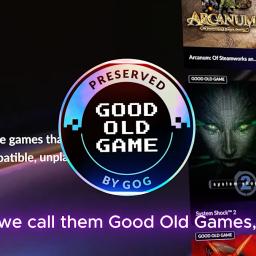 |
by Andre Revilla on (#72F3A)
Micha Kiciski, co-founder of CD Projekt, has acquired total ownership of the DRM-free video game storefront GOG. The digital video game platform was started by CD Projekt in 2008 with a stated mission to preserve "Good Old Games" (hence the GOG acronym). CD Projekt is known for its game studio CD Projekt Red, the developers The Witcher series and Cyberpunk 2077.GOG said Kiciski bought 100 percent of its shares for PLN 90.7 million ($25 million). The acquisition was fully financed through committed funding secured at the sale's closing and did not involve the sale of any of Kiciski's CD Projekt shares.The storefront will continue to operate independently under its new owner, sticking with its DRM-free philosophy and ongoing work to keep classic titles playable on modern PCs. After the sale, CD Projekt and GOG signed a distribution agreement that will see CD Projekt Red games continue to be listed on GOG.While the press release for the sale did not list a reason, a report posted Monday under the Regulatory Announcements section of the CD Projekt website states "the sale of shares in GOG is consistent with the CD PROJEKT Group growth strategy, which assumes focusing on the core business of the Company, i.e., developing and publishing video games and related projects based on the owned and new franchises." The report also describes a "competitive sale process," implying that Kiciski may not have been the only bidder.While it seems Kiciski will have a hands-on role in GOG after its acquisition, his current involvement at CD Projekt is less clear. He remains a significant shareholder but is not listed on the company's Management board or its Supervisory board.This article originally appeared on Engadget at https://www.engadget.com/gaming/pc/co-founder-of-cd-projekt-micha%C5%82-kicinski-has-acquired-gog-the-companys-game-storefront-174853415.html?src=rss
|
 |
by Jackson Chen on (#72EGK)
Ubisoft had to shut down Rainbow Six Siege's servers and roll back transactions, a situation that came from a widespread breach that left various players with billions of in-game credits, ultra-rare skins of weapons, and banned accounts. As of Sunday, December 28, the status page on Rainbow Six Siege's website still shows "unplanned outage" on all servers across PC, PlayStation and Xbox.Later that evening, though, the company confirmed that it was done testing on the update it pushed out and was opening the severs back up to players. It also said that the transaction rollback was complete, but that the Marketplace would remain closed for the time being.
|
 |
by Andre Revilla on (#72EWD)
Samsung has announced that it "aims to be the first" to natively integrate Google Photos into TVs. The aim is for Google Photos to work seamlessly with Vision AI Companion, Samsung's souped-up version of Bixby. This would help to make user photos part of the day-to-day TV experience, with photos appearing while navigating the TV's OS during "contextual and convenient moments."The company says users will be able to explore their Google Photos libraries in three new experiences. The first is called Memories, and will show curated stories based on "people, locations and meaningful moments." This has a planned launch in March 2026 and will be exclusive to Samsung TVs for six months.Create with AI will use Google DeepMind's image generation and editing model, enabling users to transform their photos using AI using themed templates. Users will also be able to turn any still image into a short video using the tool. Create with AI has a planned launch in the second half of 2026.Finally, Personalized Results will create themed slideshows of users' photos based on particular topics or the content of an image. Examples given by Samsung include the ocean, hiking and Paris. This also has a planned launch in the latter part of 2026.This article originally appeared on Engadget at https://www.engadget.com/home/samsung-plans-to-integrate-google-photos-into-its-tvs-132739713.html?src=rss
|
 |
by Valentina Palladino on (#5T5EA)
The right accessories can make your iPhone feel more capable and more personal. Whether you want to protect your phone, improve your photos or stay powered during a long day out, there are plenty of accessories that can make a real difference. MagSafe gear has opened the door for new chargers, stands and mounts, while portable batteries and compact lenses can upgrade your everyday routine.
|
by Jon Fingas,Valentina Palladino on (#69K28)
Imagine never having to fumble with a charging cable again. That's the magic of a wireless charger. Not only does going wireless clear up your space and make charging as simple as setting your phone down, but it's also surprisingly versatile. Whether you're looking for a sleek charging pad for your nightstand, a stand that keeps your phone propped up on your desk or even a foldable charger for convenient travel, there's a wireless charger designed to fit your lifestyle. Some can even double as a car charger, keeping your phone powered up on the go without the hassle of cables to plug in. With so many convenient options, it's easy to see why more people are ditching their wired chargers and embracing the effortlessness of wireless. These are the best wireless chargers we've tested so far. Table of contents
 |
by Jackson Chen on (#72EHH)
Apple isn't ready to pay a several billion-dollar fine to UK App Store users and is filing an appeal over a major antitrust lawsuit. As first reported by The Guardian, Apple has requested to appeal to the UK's Court of Appeal, which would escalate the case beyond the Competition Appeal Tribunal (CAT).The latest appeal attempt follows an October decision from the CAT, where the court found that Apple engaged in anticompetitive practices by exploiting its dominant market position with the App Store to charge higher fees. The CAT's ruling established a 1.5 billion, or roughly $2 billion, fine, but Apple said it planned to appeal and that the court "takes a flawed view of the thriving and competitive app economy." The CAT didn't grant Apple the appeal, leading the iPhone maker to seek a higher court to overturn the ruling.Apple hasn't made any official statements about its latest appeal application, but it's likely that it will argue against the CAT's proposed App Store developer fee rate of between 15 and 20 percent, which it reached through "informed guesswork," instead of the existing 30 percent. If the fine does ultimately stick, the $2 billion fine would be split amongst any App Store user in the UK who made purchases between 2015 and 2024, according to The Guardian.This article originally appeared on Engadget at https://www.engadget.com/big-tech/apple-escalates-its-appeal-of-a-2-billion-fine-from-a-uk-antitrust-lawsuit-201922558.html?src=rss
|
 |
by Jackson Chen on (#72EEZ)
After the high price tag of the Ayaneo Pocket DMG turned some retro handheld fans away, Ayaneo is working on another remake of the classic Game Boy with a slightly more affordable cost. Ayaneo revealed the pricing for the Pocket Vert, which starts at $269 for early bird orders.Compared to the Pocket DMG that retails for $449, Ayaneo skipped the OLED and configurations that go up to 16GB of memory and 1TB of storage for the Pocket Vert. Instead, the handheld maker went with a fully metal CNC body and an ultra-minimalist design with engraving-free buttons that resemble the Analogue Pocket's look. Ayaneo built the Pocket Vert with a smaller 3.5-inch LCD screen that has a 1,600 x 1,440 resolution and a Snapdragon 8+ Gen 1 chip that should allow the handheld to handle anything up to PS2 and some Nintendo Switch games.AyaneoTo play more modern games, the Pocket Vert has a hidden touch pad below the buttons that acts as a makeshift joystick. Ayaneo also hid a fingerprint sensor in the power button and included a USB-C port, a 3.5mm headphone jack and a microSD slot for more storage capacity. The Indiegogo campaign for the Pocket Vert isn't open yet, but it will be the only place to snag the latest vertical handheld from Ayaneo at its lowest price before it reverts to the retail price of $339. You can even opt for the fully specced-out version that's only available in Lava Red and has 12GB of memory and 256GB of storage for an early bird price of $369 and a later standard price of $439.This article originally appeared on Engadget at https://www.engadget.com/gaming/ayaneos-latest-game-boy-remake-will-have-an-early-bird-starting-price-of-269-174553644.html?src=rss
|
 |
by Jackson Chen on (#72E0B)
Stardew Valley is truly the gift that keeps on giving. Fans of the farm life simulator, specifically those who already own it for the Nintendo Switch 2, can download a free upgrade that introduces new features and multiplayer modes.If you have Stardew Valley on the Switch 2, you can download the Upgrade Pack that introduces mouse controls to make it easier to place furniture and organize your inventory. The upgrade also adds local split-screen co-op for up to four players and online multiplayer that maxes out at eight players. On top of the co-op modes, the free content pack includes Game Share compatibility, meaning only one player needs a copy of Stardew Valley to share it with three others.This Upgrade Pack may not have as much content as a numbered update, but some players are already reporting bugs. According to user accounts, the online multiplayer mode isn't working, while other reports noted that some crafting recipes had inaccurate material requirements or quantities. In a post on X, Eric Barone, the game's developer who's better known as ConcernedApe, said that he's taking "full responsibility for this mistake" and that the development team "will fix this as soon as possible." Later that day, Barone posted that online co-op should be fixed on both the Nintendo Switch and Switch 2 versions, adding that "we are investigating and will follow up with patches as needed" for the remaining issues.On top of addressing the bugs from the latest Upgrade Pack, Barone and the rest of the development team are also working on the upcoming 1.7 update for Stardew Valley, while Haunted Chocolatier is still under development.Update, December 28 2025, 10:45AM ET: This story has been updated to reflect Barone's latest update that online co-op has been fixed.This article originally appeared on Engadget at https://www.engadget.com/gaming/nintendo/stardew-valley-players-on-the-nintendo-switch-2-get-a-free-upgrade-174849697.html?src=rss
|
 |
by Jackson Chen on (#72E3F)
Samsung is adding two brand new speakers to its audio lineup, along with updated soundbars boosted with AI features. While not as inconspicuous as the Samsung Frame, the new WiFi speakers, called the Music Studio 5 and 7, were designed to blend into your living room's atmosphere with their minimalist design. However, if you're looking for a more convenient option, Samsung also updated its flagship HW-Q990H soundbar, while also introducing the more affordable choice of the HW-QS90H.Samsung built the Music Studio 5 with a four-inch woofer and dual tweeters, pairing them with a built-in waveguide to deliver better sound. To customize the sound, Samsung added its new AI Dynamic Bass Control that can make bass sound better without any distortion. You can even control the "gallery-inspired" speaker via voice or Bluetooth and it's compatible with WiFi casting and streaming services.SamsungFor an upgraded option, the Music Studio 7 comes with a 3.1.1-channel spatial audio that has top-, front-, left- and right-firing speakers to give a more immersive 3D audio experience. You can calibrate the sound even further with the Samsung Audio Lab Pattern Control Technology and the same AI Dynamic Bass Control feature seen with the Music Studio 5. Samsung says the Music Studio 7 can play Hi-Resolution Audio with up to 24-bit/96kHz audio processing and can either be used as a standalone speaker or paired with other Samsung audio devices.SamsungTo round out its new audio offerings, Samsung debuted the HW-QS90H, or its All-in-One Soundbar, with a 7.1.2.-channel system that features 13 drivers, nine of which are wide-range speakers. The new soundbar's built-in Quad Bass Woofer system means you can achieve deeper bass without a separate subwoofer. The All-in-One Soundbar even features Samsung's Convertible Fit design that can handle being mounted on a wall or placed on a table, and a gyro sensor that can automatically adapt channel distribution depending on its orientation, like we saw with the QS700F.Samsung even refreshed its flagship HW-Q990H soundbar this year and introduced to it the Sound Elevation feature that makes dialogue sound more natural and Auto Volume, which regulates a consistent volume across its channels for a more balanced sound. All of Samsung's latest soundbars and speakers will be on display at CES 2026.This article originally appeared on Engadget at https://www.engadget.com/audio/speakers/samsungs-two-new-speakers-will-deliver-crisp-audio-while-blending-into-your-decor-230053770.html?src=rss
|
 |
by Cheyenne MacDonald on (#72E3G)
OpenAI is looking for a new Head of Preparedness who can help it anticipate the potential harms of its models and how they can be abused, in order to guide the company's safety strategy. It comes at the end of a year that's seen OpenAI hit with numerous accusations about ChatGPT's impacts on users' mental health, including a few wrongful death lawsuits. In a post on X about the position, OpenAI CEO Sam Altman acknowledged that the "potential impact of models on mental health was something we saw a preview of in 2025," along with other "real challenges" that have arisen alongside models' capabilities. The Head of Preparedness "is a critical role at an important time," he said.Per the job listing, the Head of Preparedness (who will make $555K, plus equity), "will lead the technical strategy and execution of OpenAI's Preparedness framework, our framework explaining OpenAI's approach to tracking and preparing for frontier capabilities that create new risks of severe harm." It is, according to Altman, "a stressful job and you'll jump into the deep end pretty much immediately."Over the last couple of years, OpenAI's safety teams have undergone a lot of changes. The company's former Head of Preparedness, Aleksander Madry, was reassigned back in July 2024, and Altman said at the time that the role would be taken over by execs Joaquin Quinonero Candela and Lilian Weng. Weng left the company a few months later, and in July 2025, Quinonero Candela announced his move away from the preparedness team to lead recruiting at OpenAI.This article originally appeared on Engadget at https://www.engadget.com/ai/openai-is-hiring-a-new-head-of-preparedness-to-try-to-predict-and-mitigate-ais-harms-220330486.html?src=rss
|
 |
by Jackson Chen on (#72E14)
The Retroid Pocket 6 may have gotten off to a rocky start, but the gaming handheld is officially completed and going to see its first shipments soon. The handheld maker revealed the final product shots of the Retroid Pocket 6 in black and orange on X. Along with in-person product pics, Retroid revealed gameplay videos of its handheld, running emulation of PlayStation 2 games.For those looking to relive some classic Nintendo or PlayStation titles, the Retroid Pocket 6 offers a great entry point into the retro handheld world since it can emulate games up to Nintendo Switch and PS2. However, Retroid did have some initial blowback about its design and decided to go back to the drawing board. Following the early criticisms, Retroid decided to add an option for customers to choose between having the D-pad or a thumbstick at the top of the handheld's left side.RetroidThe problems persisted for Retroid, as the handheld maker had to then cut short the early bird pricing thanks to the widespread memory shortage. Instead of offering the handheld for $209 until January, Retroid removed the discount in late December, leaving new buyers paying the full retail price of $229. However, the internal specs remained the same, with a Snapdragon 8 Gen 2 processor, up to 12GB of memory and up to 256GB of storage that's expandable with a TF card slot.Despite the hiccups, Retroid looks ready to start shipments of its latest retro gaming handheld as evidenced by the new photos and videos. According to the website, the first batch of Retroid Pocket 6 preorders are due to start shipping in January. Second bath preoders are still available on Retroid's website, which are expected to get to customers in March.This article originally appeared on Engadget at https://www.engadget.com/gaming/heres-the-first-real-look-at-the-retroid-pocket-6-running-ps2-games-193624145.html?src=rss
|
 |
by Andre Revilla on (#72DPV)
The State of New York will now require social media platforms to display warning labels similar to those found on cigarettes. The bill was passed by the New York Legislature in June and signed into law by Gov. Kathy Hochul on Friday. It will apply to any platforms that feature infinite scrolling, auto-play, like counts or algorithmic feeds. The labels will caution those on the platform about potential harm to young users' mental health.Social media companies will be required to display these warning labels when a user first interacts with any of the features the state considers predatory. The warning will also be displayed periodically after that interaction."Keeping New Yorkers safe has been my top priority since taking office, and that includes protecting our kids from the potential harms of social media features that encourage excessive use," Gov. Hochul said in a statement. The law will apply when any of these platforms are being accessed from New York. Gov. Hochul also signed two bills into law last year aimed at protecting kids from social media.Concerns over the mental health effects of social media platforms on younger users have been mounting and government bodies have been increasingly taking action. A bill similar to the one in New York has been proposed in California. This year Australia became the first nation to ban social media for children, with Denmark soon to follow.Last year the US surgeon general said social media should come with warning labels and highlighted data associating social media use with increased anxiety and depression in youth. The risks of social media use on children's mental health are multifactorial and are still being studied.We've reached out to Meta, Snap and TikTok for comment and will update if we hear back.This article originally appeared on Engadget at https://www.engadget.com/social-media/new-york-state-will-require-warning-labels-on-social-media-platforms-210306716.html?src=rss
|
 |
by Engadget on (#72DNG)
If streaming services' year-in-review campaigns have shown us anything, it's that we've spent a staggering amount of time drowning out the hum of everyday life with music, podcasts and audio series. And with some incredible new releases this year, we were really eatin' good. Here are some of the Engadget team's favorite things we listened to in 2025.Spiritbox - Tsunami SeaI became aware of Spiritbox in late 2024 shortly before the band dropped its latest album, Tsunami Sea. At the time, I was in a deep Sleep Token phase, and I don't remember how I stumbled upon Spiritbox, but I'm sure glad I did. Not knowing anything about the band, I initially thought it had two singers: one for clean vocals and another for the harsh, guttural screams.Well, I was wrong. Vocalist Courtney LaPlante handles it all, and she is a force of nature. After learning of a new band, I do what any self-respecting music nerd does: I looked up live videos of them on YouTube. The way LaPlante seamlessly transitions from airy, ambient singing to some of the best growls you'll hear in metal music is effortless. And after seeing Spiritbox live in person earlier in December, I can attest to her ability to consistently nail both vocal styles for the entirety of an hour-long set.My infatuation with Spiritbox isn't just with the vocalist though. Guitarist Mike Stringer, LaPlante's husband, also has a lot of unique abilities to offer. Stringer's use of noise and whammy effects in his riffs create a signature style, not to mention his mix of nu-metal, djent and metalcore sensibilities. He also has some of the thickest guitar tones I've ever heard live, and I was mesmerized for the full set. Stringer's guitar work on Tsunami Sea is a prime example of a unique musician at the height of his powers.Tsunami Sea takes you on a ride. The first two tracks are all-out ragers, and after a slight respite in Perfect Soul" and Keep Sweet," the album's best song comes fifth. I've heard LaPlante dedicate it to all the people I love to fucking hate," and it's clearly written about her enemies. It's also the perfect example of what this band is capable of. It's three minutes of LaPlante's screams interlaced with plenty of Stringer's trademark guitar work.The rest of the album showcases the band's ability to blend dynamics, with No Loss, No Love" and Ride The Wave" providing the highlights on the back half of the record. The album's title track is a great vehicle for LaPlante's clean vocals, serving as the introduction to the album's second act. If you've been enamored with Sleep Token this year like I have, give Spiritbox a go - you won't be sorry you did. - Billy Steele, Deputy Editor, ReviewsBandsplainI didn't discover Bandsplain in 2025, but I definitely listened to it more than any other podcast in terms of total time spent. Sure, that's because most episodes are over three hours long, but I digress. Host Yasi Salek does a deep dive on cult bands and iconic artists" to... ahem, bandsplain why people love them. There's a deep catalog of back episodes, so there's sure to be an in-depth analysis of a band you're familiar with. But even if you think you know an artist, I'm willing to bet Salek will divulge parts of the story you weren't aware of.Jimmy Eat World's Clarity is a top 5 all-timer for me, and Salek had plenty to offer about the narrative around that album I didn't know. Her grunge series from 2024 was a history lesson I wish I'd had in middle school when I first discovered Soundgarden, Pearl Jam, Alice in Chains and the rest of the lot. An older episode about Nine Inch Nails served as the primer for me seeing the band live for the first time in September. And that's the thing about the show: the back catalog holds up. If you're waiting for the next installment to drop, there's certainly something in the archives you'll enjoy.No shade to Salek's colleagues at The Ringer, but the best episodes of Bandsplain are when the guest is a musician. Thursday front man Geoff Rickly was excellent on that Nine Inch Nails episode, and Death Cab for Cutie singer Ben Gibbard had me on the edge of my seat when he was on to discuss The La's - a band I'd never heard of before. I'd also highly recommend the episodes on Oasis and the more recent one on Alanis Morissette. But, really, you can't go wrong starting from anywhere on the episode list. - B.S.Lucy Dacus - Forever is a FeelingI remember being a teenager and hearing from an adult that they did not religiously seek out, research, evaluate and introduce new bands and songs into their lives as if all existence would cease without the life-sustaining energy of new music. I was confused, concerned and damn sure that wouldn't happen to me.You know where this story goes: Job. Kid. House. Spouse. Pets that will die if I don't feed, walk, play with and/or medicate them. I allow the algorithm to feed me new songs but rarely does something stick, so I end up listening to tracks I bonded with in my teens and twenties.This year, Blossom & Bones, a three-day music festival in Ghost Ranch, New Mexico, managed to push through the churn and lodge new music into my brain. Along with my kid and some friends, I camped among some of the most beautiful landscapes imaginable and ambled over to the stage each evening for performances by Santigold, Ani DiFranco and about a dozen more.Lucy Dacus, one third of the indie group Boygenius, did a one-hour set with plenty of songs from her latest album Forever is a Feeling. Hearing the songs for the first time, I felt like I'd been listening to them for years. Lilting harmonies and layered strings create a lovely backdrop for Dacus's velvet voice, but there's a sharpness to her observations about relationships, rejection and sex. I've been looping the album ever since. - Amy Skorheim, Senior Reporter, Buying AdviceBlanco White - So Certain" (single)Early on the last concert of the day at that same festival, Blanco White took the stage. People were aimlessly milling about and the sun hadn't yet set. Kids were playing on the lawn and the smell from the food trucks was intense, but I was enrapt by the four people on stage. The sad violin and strummy guitars floated with the hand-beat drum out into the red hills. The music sounded like I felt: rooted and wrapped in the harsh beauty of the desert and I was really glad to take that home with me. - A.S.Martian RevolutionIf you're as big a nerd as I am, you might know that Leo Tolstoy didn't consider War and Peace to be a novel. The story is what most people read for, but in the author's mind, all the drama was a parable to illustrate his grand theory of history.Over the last year, history podcaster Mike Duncan has accomplished a similar feat using a medium Tolstoy never imagined. Duncan's Revolutions podcast has covered ten different revolutionary upheavals across history, starting with the English Civil War and ending with the Russian Revolution. After wrapping up the Bolsheviks, Duncan took a few episodes to suggest a grand theory of how revolutions unfold. For a while, it seemed like that was all we'd get. Then, in the middle of 2024, he started posting original sci-fi - without any indication that this tale, which followed future Martians revolting against their corporate overlords on Earth, was in any way different from the previous ten seasons.Part of what makes the Martian Revolution so excellent is Duncan's deadpan delivery. He never once breaks character. He rattles off lists of fictional sources, apologizes for inaccuracies in prior episodes, and introduces made-up historical figures with the same gravity he once used to mention George Washington or Simon Bolivar. If you're a fan of Revolutions, you'll have a blast recognizing character archetypes. (Mabel Dore is the Liberal Noble! Timothy Werner is the Man of Blood!)But the podcast is great even if you've never listened to an episode of Revolutions. It has an excellent grasp of character and a sense of inevitable tragedy, but with moments of joy leavened throughout. I certainly hope we don't wind up in the megacorp-ruled future of the podcast, but if we do, it'll be a great consolation if it eventually turns out the way Duncan imagines. - Sam Chapman, Senior WriterRon Gallo - CheckmateMy favorite artists are ones that surprise me, and Ron Gallo is a master of reinvention. He's dabbled in absurdist punk, psychedelia, garage rock, Beatles-tinged pop and, now, stripped-down acoustic music. This is not a genre I am typically a fan of, Elliott Smith withstanding, but Checkmate is something special. His lyrical prowess is off the charts here, trading his usual wordplay for simple and emotionally-gutting truisms about life, love and, well, the end of the world.Of course, the lyrics wouldn't work if the songs weren't good. The songs are very good. The title track is just about the perfect love song, with a primary hook that gets lost in your head for weeks. Other tracks offer hints of Mac DeMarco, Dan Fogelberg, Kevin Morby and just about everyone else who has crafted great songs on an acoustic guitar. It's fitting that Gallo has found a home on the label Kill Rock Stars, which released so much of Elliott Smith's work back in the day. As an aside, Gallo regularly posts songs about current events on TikTok and other social media platforms, which are worth checking out if you like stuff like Jesse Welles. - Lawrence Bonk, Contributing ReporterDe La Soul - Cabin in the SkyThere have been hip-hop albums that explored the finality and tragedy of death, but not many that truly tackled spirituality and long-term grief. De La Soul has done just that, following the passing of founding member Trugoy the Dove. This album serves as a final testament of sorts for Trugoy, as he's heavily featured throughout. In that way, Cabin in the Sky is reminiscent of A Tribe Called Quest's 2016 masterpiece We Got It from Here... Thank You 4 Your Service, which followed the death of rapper Phife Dawg.Like Tribe's modern classic, Cabin in the Sky is filled with absolute bangers. It features standout beats by DJ Premier, Pete Rock, Trugoy, Jake One and others. The rhymes are great and all three primary De La members are given time to shine. Guest rappers like Common and Nas got the memo, delivering some of their most memorable verses in years. Heck, even Giancarlo Esposito is on board as the narrator. Some reviewers have dinged this album for being too long but, come on, that's like complaining there's too much pizza. It's De La Soul. - L.B.FKA twigs - EusexuaThis was a really good year for new music IMO, so much that I've been finding it pretty difficult to think back and settle on my favorite releases. But, FKA twigs' Eusexua undeniably did some heavy lifting for me, pretty much carrying me through the first six or so months of the year without much competition, and I've circled right back to it as the year closes. It's an album that somehow seems to meet every vibe. It'll have you in club mode and ready for a night of sweaty, filthy dancing in under three minutes, or feeling bright and upbeat like a midday walk on the first day of spring - yet it still hits when you're having a good ol' car cry."Girl Feels Good" is for sure one of my most-played songs of the year, followed closely by "Eusexua," "Perfect Stranger," "Keep It, Hold It" and "Striptease." If ever I can't decide what I'm in the mood to listen to, I throw this album on and it doesn't disappoint. - Cheyenne MacDonald, Weekend EditorFaetooth - LabyrinthineFaetooth's sophomore album, Labyrinthine, is face-melting, melancholic perfection. The band describes its sound as "fairy doom," but don't let that first word fool you into thinking it isn't heavy as hell. Labyrinthine goes unbelievably hard, and will have you feeling like you're eternally wandering a cursed bog, surrounded by the wailing of the unfortunate souls who came before you. Don't believe me? Put on "White Noise." This is really an album that should be enjoyed in its entirety, though, and I can't individually name half the songs on it because I tend to just keep the whole thing playing on rotation. - C.M.Orville Peck - AppaloosaThis EP is truly a testament to my ability to run my obsessions into the ground, because it only came out in mid-November and somehow landed on my most-listened wrapup for the end of the year... which was released some two weeks later. It's front-loaded with its strongest songs, a powerful and kind of haunting trio that just flows beautifully from one into the other: "Dreaded Sundown," to "Drift Away" into "Atchafalaya" (ft. Noah Cyrus). As a fan of musicals, I also loved the inclusion of "Maybe This Time," a cover from Cabaret, especially since I was pretty bummed to have missed Peck's stint as the Emcee in Cabaret on Broadway this summer. - C.M.Case 63I got into an audio series kick this year, and dove into shows like Unicorn Girl, Stalked! and more. But none of the dramatized fiction I listened to in 2025 had me hooked like Case 63. Setting aside that it's voice-acted by A-listers Julianne Moore and Oscar Isaac, which is a phenomenal pairing that won me over on star power alone. The best thing about Case 63 is its storytelling.Moore stars as a psychologist, meeting Isaac for the first time in a prison interview. Isaac has been claiming to be a traveler of sorts, and through recorded sessions and voice notes, we hear his side of the story, as well as her reactions and ultimate involvement in the adventures. Every step of the way, particularly in the beginning, there is clear explanation as to why the exchange is being recorded. It isn't necessary, but it's helpful in my buying into the realism of the story.It isn't just the method and technical aspects of the storytelling, of course. Narratively, Case 63 is a gripping ride, and thanks to its short episodes, it's easy to binge really quickly. There is certainly a generous use of cliffhangers to help speed things along, but I found myself eager to devour the entire series in one commute. The story continued to linger in my mind days after I finished both existing seasons, and I'm hoping the new one drops soon. If you're looking for a quick and easy sci-fi audio series, do not miss Case 63. - Cherlynn Low, Managing EditorSecure LoveI spent a lot of time this year trying to learn more about my attachment style and how it shows up in all the relationships in my life. Between Stephanie Rigg's On Attachment podcast, the TV show Couples Therapy and all the books on the topic of attachment styles, trauma and more, I've consumed them all. And while they've all been helpful in different ways, one podcast stuck out to me this year. It's hosted by Julie Menanno, MA, LMFT, LCPC, creator of the @TheSecureRelationship account on Instagram and the author of Secure Love: Create a relationship that lasts a lifetime.You can probably tell from that introduction what Menanno's work is all about. Relationships, from the lens of attachment styles. The Secure Love Podcast doesn't just re-deliver the same information we've seen published across various media and platforms, though. Each season of the podcast (it's partway through the second as of this writing) sees Menanno work with one couple through their negative cycles, using somatic practices to help each partner understand their emotions, triggers and reactions. Because we're listening to real people talk about real-life happenings, it's not only easy to relate, but listeners often see themselves in these scenarios. At the start of each episode, too, Menanno reads out or plays notes from the audience, and you can see how fellow listeners have reacted.This season, for example, my friend and some other listeners seemed to really dislike Brian, the anxious male partner in this season's pair. While I've certainly found some of Brian's ways of speaking borderline offensive, I had a lot more sympathy for him as I started seeing his traits in my loved ones. I also started to identify with his partner Bethany, who Menanno typed as having an avoidant attachment style.As I listened to Bethany and Brian describe the reasons they got into fights and explain where they were coming from, suddenly it felt like the world made sense. I saw similar patterns and reasonings in my own relationship, as well as those of my parents, relatives and friends.It is slightly voyeuristic to listen to something so intimate, of course, but Menanno makes it all educational rather than just entertaining. She gently interrupts parts of each episode to tell the audience why she asks certain questions or what she's attempting to achieve by asking Brian or Bethany to sit with their difficult feelings.I found her method familiar, as I recently started working with a somatic coach whose approach is similar to Menanno's, which is rooted in emotion-focused therapy (EFT). Staying with uncomfortable feelings makes me want to jump out of my skin, but being able to endure them, question why they arise and then understand where they come from is crucial to helping uncover the thinking that causes them. Sometimes they're the result of flawed logic, catastrophic thinking or a simple lack of context, but often they're very reasonable reactions.If you're looking to understand yourself and your emotions a bit better, or just want to get an idea of what EFT or couples therapy sounds like, I can't recommend The Secure Love Podcast highly enough. - C.L.This article originally appeared on Engadget at https://www.engadget.com/entertainment/music/what-we-listened-to-in-2025-201308584.html?src=rss
|
 |
by Valentina Palladino,Amy Skorheim on (#5M67V)
The best iPad accessories can make an aging tablet feel like new again, or give you additional ways to use that new slab you just bought. Whether it's a slim folio case, an Apple Pencil, a docking station or a paper-like screen protector, there are so many iPad accessories out there that can transform how you use your tablet on a regular basis - and make your iPad last longer, too. We've tested a plethora of accessories over the years, and these are the best iPad accessories you can get right now. Table of contents
|
by Will Shanklin on (#72DHJ)
A Google support page in Hindi says the ability to change your Gmail address is on the way. The feature would allow you to replace your current @gmail.com address with another. Your old address would remain active as an alias on the account, and all your data would stick around, unaffected.The support page (translated) says that "the ability to change your Google Account email address is gradually rolling out to all users." The change was first spotted on a Google Pixel forum on Telegram and was first reported in the press by 9to5Google.Google hasn't made a formal announcement about the change. The English version of the support page still says you usually can't change your @gmail.com address. Up to this point, Google has only allowed address changes for non-gmail.com addresses.Engadget reached out to Google for confirmation. We'll update this story if we hear back.When the feature (presumably) rolls out broadly, you'll change it through your account settings. Sign in to your Google account, then go to Manage your Google account > Personal info > Google Account email. If you don't see the option to change it, then you'll have to wait.This article originally appeared on Engadget at https://www.engadget.com/computing/you-may-soon-be-able-to-change-your-gmail-address-165633905.html?src=rss
 |
by Lawrence Bonk on (#72DHK)
LG has revealed a new lineup of gaming monitors just ahead of CES. The UltraGear evo displays offer 5K visuals. Many incorporate on-device AI upscaling, taking some of the burden away from the GPU.LG says the tech will let consumers skip out on some card upgrades. This could end up being extremely beneficial because the AI boom has been impacting GPU prices.LGThere are three displays in the lineup so far, with more to come down the line. There's a 39-inch OLED (39GX950B) that includes the aforementioned AI upscaling to 5K, but also algorithms for scene optimization and sound. The company says this will "refine images and audio performance for a more immersive audiovisual experience."This monitor can easily switch from the standard resolution with a refresh rate of 165Hz to a much zippier WFHD resolution with a refresh rate of 330Hz. This is supported by a 0.03ms response time. It's curved with a 21:9 aspect ratio.LGThere's also a 27-inch MiniLED (27GM950B) in the lineup. This display has been "designed to dramatically improve blooming control", which is done by minimizing halo effects and stuffing in 2,304 local dimming zones. LG promises it "preserves fine details across bright and dark scenes alike."This one features AI algorithms for upscaling to 5K, scene optimization and sound. It can also switch between 165Hz at 5K and 330Hz at QHD, with a 1ms response time. The screen boasts a peak brightness of 1,250 nits.LGFinally, there's the beastly 52-inch (52G930B) large-format gaming display. You didn't read that wrong. This is a 52-inch gaming monitor. This 5K display offers a speedy 240Hz refresh rate. The 1000R curvature wraps around the peripheral, which should be great for flying sims and stuff like that.LG hasn't released any information as to when we'll be able to get our mitts on these displays, or how much they will cost. With all the tech on offer, it's likely they'll cost a pretty penny.This article originally appeared on Engadget at https://www.engadget.com/computing/accessories/lg-announces-line-of-premium-gaming-monitors-that-offer-5k-visuals-165224945.html?src=rss
|
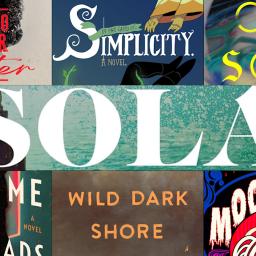 |
by Engadget on (#72DHM)
This was the kind of year that felt 100 years long, so who could blame us for leaning into a bit of escapism? Some of us buried our noses in books in 2025, and thankfully, there were plenty of good reads to get lost in. Here are some of the Engadget team's top picks from the year.Wild Dark Shore by Charlotte McConaghyWild Dark Shore pulls off a magnificent balancing act of telling an intimate, personal story coupled with the backdrop of impending climate disaster. A father and three children are living on a remote island near Antarctica, taking care of a vast seed bank that was part of an abandoned research facility. They're literally trying to stay above water for a few months until they get bailed out from the island along with as much of the seed bank as they can save before it goes under when a woman named Rowan washes up on shore. She survives, is nursed back to health, and starts forming bonds with her rescuers and their mission - but at the same time, she has some unexpected connections to the island and the former research team that lived there that she keeps to herself.The magic of this book is in the way Charlotte McConaghy builds tensions from many sources throughout the book; you feel a lingering sense of discomfort through, waiting for the other shoe to fall even as Rowan gets closer and closer to the family. It's a small-scale story at its heart, but with the backdrop of disaster looming the stakes feel extremely high. And McConaghy is a master at putting these feelings on the page in gorgeous prose. As she showed in her previous work Migrations, she has a real talent for realistically describing near-future climate disasters, but Wild Dark Shore raises the personal stakes in a visceral way. - Nathan Ingraham, Deputy EditorMoonflow by Bitter KarellaThis book is a chaotic and deeply weird rollercoaster ride that repeatedly gave me whiplash, and I loved it. Fair warning, it's not for the weak-stomached. It is horrifying, hilarious, nauseating and somehow a very good time and a very bad time simultaneously. Moonflow is told through dual narratives, one following Sarah, a trans woman and mushroom dealer who has found herself in a desperate situation, and the other following the henchwomen of a deranged cult that's made its home in a cursed forest. After Sarah ventures into these woods in search of the King's Breakfast, a rare mushroom said to grant divine understanding to those who consume it, all hell breaks loose.Karella's writing is immersive, and this is the kind of book you can see, feel, hear and smell, for better and worse. Every person in this book is like a caricature of someone I've crossed paths with at some point in life, and the names of the cult members are just... chef's kiss. Some of them had me howling. It is completely unpredictable - except in those few moments where it seems the author wants you to know exactly where things are going just to make you dread the inevitable. Reading Moonflow was a visceral, unforgettable experience. - Cheyenne MacDonald, Weekend EditorSimplicity by Mattie LubchanskyAnother one about a cult, except this cult rules. I picked up Simplicity knowing nothing about it except that everyone cool on the internet seemed to be praising it, and was excited to discover that it's set near where I live in New York's Hudson Valley, in a future version of the Catskills. And here in the Hudson Valley, it often feels like I'm one or two innocuous decisions away from accidentally joining a cult, so there was an immediate connection. In Simplicity, it's the year 2081 and New York City is a high-tech dystopia run by a billionaire. North of the city, though, various communities have settled off-grid, including a group called The Spiritual Association of Peers.Lucius Pasternak, a trans man, is sent on an anthropological assignment from the mayor to SAP's compound, Simplicity, and it doesn't take long for their uninhibited way of life to start growing on him. But Lucius soon begins to have strange dreams, and a series of violent attacks shakes up the community. Through his mission to understand the people of SAP and later to find and stop the entity that's targeting them, a beautiful story about queerness and identity and belonging and fighting for what's important unfolds. This feels like the kind of book that should be passed around between friends who just get it, and I imagine many readers will feel incredibly seen by it like I did. - C.M.The Buffalo Hunter Hunter by Stephen Graham JonesOr Stephen Graham Jones' Interview with the Vampire. The Buffalo Hunter Hunter blends historical fiction and horror to give us one of the most impactful vampire novels of our time - one that serves as an uncomfortable but necessary reminder of the atrocities committed against indigenous people in the US by white settlers. It begins with the discovery of a crumbling journal that claims to contain the confession of a Blackfeet man-turned-vampire named Good Stab, as told to Lutheran pastor Arthur Beaucarne. What follows is a gutting chronicle of slaughter, heartbreak and revenge. It's a classic in the making. - C.M.Isola by Allegra GoodmanHistorical fiction is how I trick my brain into possibly learning something. And because the endings are set, the author has to hook you into the drama with more than just the peril of an unknown outcome. I fell deep into Wolf Hall even though I knew which heads Henry VIII chopped off. I thought Isola might be similarly gratifying.It tells the story of Marguerite de la Rocque de Roberval, a young noblewoman from France who was intentionally marooned on an island off the coast of Canada in 1542. The story is based on historical records so you know the plot won't adhere to safe formulas, but mon dieu, I was not prepared for how rough things would be for Marguerite.Her troubles began long before she found herself fighting for survival on a wild uninhabited island with brutal winters. From birth, nearly every happiness was undercut by more dominant forces, yet the woman never stopped moving forward. Thankfully, Goodman draws Marguerite's character not as some tired brand of plucky heroine with grit and a wink, but as a perceptive, pragmatic being who also gives in to impulse and doesn't have everything figured out.Isola is beautifully rendered, from the stone chateaus to creaking ships and rough abundance of the island. Despite being set over 400 years ago, nothing feels dated. Human versus universe is an unfair battle, but I rooted for Marguerite on every page - and those pages turned quickly. - Amy Skorheim, Senior Reporter, Buying AdviceOld Soul by Susan BarkerThis was one of the first books I read this year, and it's really stuck with me. Old Soul travels through time and all over the world, across multiple storylines to trace the devastating impact of one mysterious woman who seems to defy the rules of mortality and always leave tragedy in her wake. Barker's writing in Old Soul pulls the reader in and doesn't let go. It's an unsettling slow burn that did a great job of getting under my skin. - C.M.Meet Me at the Crossroads by Megan GiddingsIf a door appeared out of nowhere, would you go through it not knowing what lies beyond or if you'd be able to return? In Meet Me at the Crossroads, seven doors pop up one day around the world, and people are unsurprisingly captivated by them. Regular people tempt fate, the ultra-wealthy plan exclusive excursions through them, religions form around their mystique. Ayanna is a teenager who was brought up in one of these religions. She's also a twin, with a sister named Olivia who she's been separated from after their parents' split. When it comes time for Ayanna to go through one of the doors as part of a ceremony, Olivia makes a last-second decision to go with her. What follows is the aftermath of that decision. Meet Me at the Crossroads is a haunting and emotional journey. - C.M.Woodworking by Emily St. JamesI am a cisgender, white middle-aged man, so the experience of learning and accepting a different gender identity is something I will never fully understand. But Woodworking, the debut novel by Emily St. James, is a hilarious, tragic and ultimately hopeful look at two trans women navigating different moments of acceptance in their lives. Erica is a mid-30s high school teacher who is recently divorced and just figuring out that she's trans, something no one else knows about her at the start. Her student, 17-year-old Abigail, is her opposite: proudly out about her identity in a way that's uncommon and dangerous in her small, conversative town in South Dakota.Their paths intersect, and Abigail ends up in the uncomfortable and somewhat unethical role of helping Erica find herself. After all she's confident and not afraid of who she is - but she's also still a teenager, one dealing with massive trauma of her own. The dual look into these two protagonists, each with sections of the book narrated from their own points of view, gave me a vivid picture of the different challenges, emotions and dangers trans people face. But the unexpected community that develops around both characters plainly shows the value of living as your true self in a way that (hopefully) anyone should be able to relate to. - N.I.This article originally appeared on Engadget at https://www.engadget.com/entertainment/our-favorite-books-we-read-in-2025-160000704.html?src=rss
|